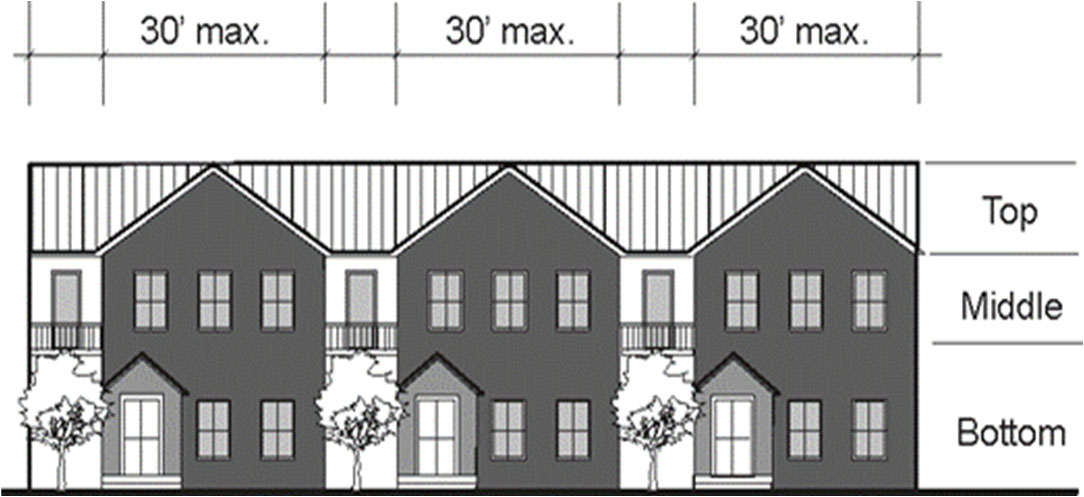Chapter 22C.070
EAST SUNNYSIDE – WHISKEY RIDGE SUBAREA – DESIGN REQUIREMENTS
Sections:
Article I. Purpose and Applicability
Article II. Zoning
22C.070.040 East Sunnyside – Whiskey Ridge subarea plan zoning classifications.
Article III. Residential Subdivision Design
22C.070.070 Residential developments.
Article IV. Site Design
22C.070.080 Building location and orientation.
22C.070.110 Side and rear yard treatments.
Article V. Vehicular Access and Parking
22C.070.120 On-site vehicular access and connections.
Article VI. Pedestrian Environment
22C.070.140 Sidewalk and pathway standards and guidelines.
22C.070.150 Pedestrian circulation.
Article VII. Building Design
22C.070.180 Architectural character and scale.
22C.070.200 Building materials and color.
Article VIII. Landscaping and Screening
22C.070.220 Fences and screening elements.
Article I. Purpose and Applicability
22C.070.010 Purpose.
The purpose of this chapter is to apply design standards and guidelines in the East Sunnyside – Whiskey Ridge subarea, adopted by Ordinance No. 2696, as required standards for all new construction. It is also the purpose of this chapter to:
(1) Encourage the realization and creation of a desirable and aesthetic environment in the East Sunnyside – Whiskey Ridge subarea;
(2) Encourage and promote development which features amenities and excellence in site planning, streetscape, building design and contribution to community aesthetic appeal;
(3) Encourage creative approaches to the use of land and related physical developments;
(4) Minimize incompatible and unsightly surroundings and visual blight which prevent orderly community development;
(5) Allow a mixture of complementary land uses that may include housing, retail, offices, and commercial services, in order to create economic and social vitality and encourage the linking of vehicle trips;
(6) Develop commercial and mixed use areas that are safe, comfortable and attractive to pedestrians;
(7) Support the use of streets as public places that encourage pedestrian and bicycle travel;
(8) Reduce opportunities for crimes against persons and property;
(9) Minimize land use conflicts and adverse impacts;
(10) Provide roadway and pedestrian connections between residential and commercial areas;
(11) Provide public places and open space networks to create gateways, gathering places, and recreational opportunities that enhance the natural and built environment. (Ord. 3230 § 2 (Exh. A), 2022).
22C.070.020 Applicability.
(1) Applicability.
(a) The design guidelines set forth in this chapter shall apply to all new construction in the East Sunnyside – Whiskey Ridge subarea.
(b) The design guidelines shall be legally required standards, which shall be applied by the city to all development approvals and permits in the East Sunnyside – Whiskey Ridge subarea.
(c) The following activities shall be exempt from these standards:
(i) Construction activities which do not require a building permit;
(ii) Interior remodels of existing structures;
(iii) Modifications or additions to existing multifamily, commercial, industrial, office and public properties when the modification or addition:
(A) Constitutes less than 10 percent of the existing horizontal square footage of the use or structure; and
(B) Constitutes less than 10 percent of the existing building’s exterior facade.
(d) Where these standards in this chapter conflict with other standards outlined in MMC Title 22, Unified Development Code, the director shall determine which regulation applies based on which is more in the public interest and more consistent with the comprehensive plan.
(2) Interpreting and Applying the Design Standards.
(a) These standards capture the community visions and values as reflected in the comprehensive plan’s neighborhood planning areas. The director retains full authority to determine whether a proposal meets these standards.
(b) Within these standards, certain words are used to indicate the relative importance and priority the city places upon a particular standard.
(i) The words “shall,” “must,” and “is/are required,” or words with their equivalent meaning, mean that the development proposal must comply with the standard unless the director finds that:
(A) The standard is not applicable in the particular instance; or
(B) The development proposal meets the intent of the standards in some other manner.
(ii) The word “should,” or words with its equivalent meaning, means that the development proposal will comply with the standard unless the director finds that:
(A) The standard is not applicable in the particular instance;
(B) The development proposal meets the intent of the standards in some other manner; or
(C) There is convincing evidence that applying the standard would not be in the public interest.
(iii) The words “is/are encouraged,” “can,” “consider,” “help,” and “allow,” or words with their equivalent meaning, mean that the action or characteristic is allowed and will usually be viewed as a positive element in the city’s review.
(c) The project proponent may submit proposals that, in their opinion, meet the intent of the standards but not necessarily the specifics of one or more standards. In this case, the director will determine if the intent of the standard has been met. (Ord. 3230 § 2 (Exh. A), 2022).
Article II. Zoning
22C.070.030 Purpose.
The purpose of this article is to:
(1) Implement the East Sunnyside – Whiskey Ridge subarea plan goals and policies through land use regulations.
(2) Provide an efficient and compatible relationship of land uses and zones. (Ord. 3230 § 2 (Exh. A), 2022).
22C.070.040 East Sunnyside – Whiskey Ridge subarea plan zoning classifications.
The Easy Sunnyside – Whiskey Ridge subarea regulations in this chapter comprise zoning classifications and regulations which are unique to the subarea, except where other regulations in this title are adopted by reference.
|
Name of East Sunnyside – Whiskey Ridge Subarea Plan Zoning Districts |
Symbol |
|---|---|
|
Community Business |
CB-WR |
|
Mixed Use |
MU-WR |
|
Multifamily Medium |
R-18-WR |
|
Multifamily Medium 6 – 18 |
R-6-18-WR |
|
Single-Family 4.5 – 8 |
R-4-8-WR |
|
Single-Family High |
R-6.5-WR |
|
Recreation |
REC-WR |
(Ord. 3230 § 2 (Exh. A), 2022).
22C.070.050 District map.
Figure 2-1 illustrates the location and boundaries of East Sunnyside-Whiskey Ridge area for reference.
Figure 2-1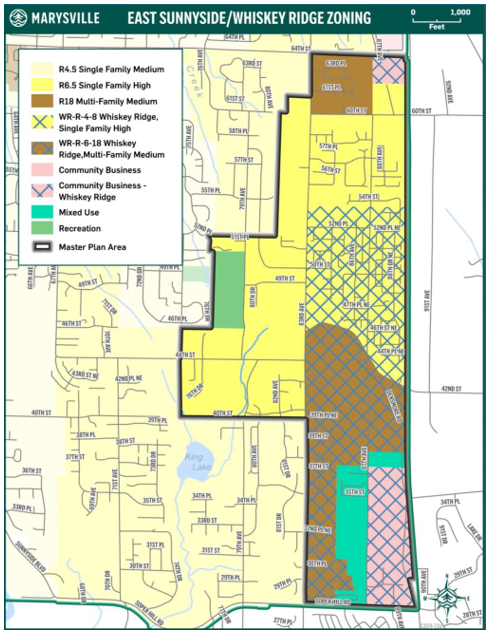
Click for high-resolution PDF
Click for high-resolution PDF.
(Ord. 3331 § 11 (Exh. K), 2024; Ord. 3230 § 2 (Exh. A), 2022).
Article III. Residential Subdivision Design
22C.070.060 Intent.
To provide pedestrian-oriented streets where development faces the street. (Ord. 3230 § 2 (Exh. A), 2022).
22C.070.070 Residential developments.
All residential developments shall be designed to front onto streets. Configurations where dwelling units and/or residential lots back up any street are prohibited except for those lots adjacent to State Route 9.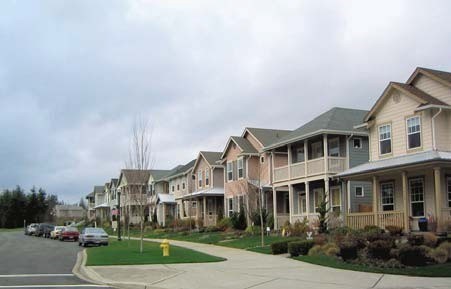
Figure 3-1. Homes along an arterial served by alley access in the rear.
For example, new subdivisions along 83rd Avenue NE could be configured so that lots fronting on the street feature alley access in the rear or other shared driveway access as approved by the city on the side of the lots. Lot configurations where side yards face the street are acceptable. See standard MMC 22C.070.220(2) for related fence requirements along side yards. (Ord. 3230 § 2 (Exh. A), 2022).
Article IV. Site Design
22C.070.080 Building location and orientation.
(1) Intent.
(a) To arrange and orient buildings in a way that encourages pedestrian activity in the neighborhood.
(b) To enhance the visual character and definition of streets within the neighborhood.
(c) To encourage interaction among neighbors.
(d) To increase privacy for residential uses located near the street.
(e) To take advantage of special opportunities to create a composition of buildings and open spaces.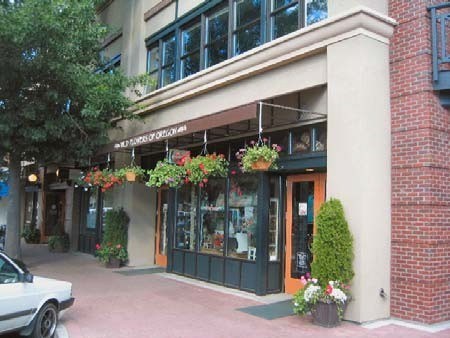
Figure 4-1. Pedestrian-oriented facade example.
(2) Standards and Guidelines.
(a) Storefronts. Buildings with nonresidential uses on the ground floor may be placed at the edge of the sidewalk, provided they feature a pedestrian-oriented facade, per subsection (2)(b) of this section.
(b) Pedestrian-Oriented Facades. To meet the definition of a pedestrian-oriented facade, a facade must include the following elements:
(i) The primary pedestrian entrance shall be located on this facade.
(ii) The ground floor facade between two and eight feet above the ground shall contain a minimum of 75 percent transparent window area.
(iii) Weather protection at least five feet in depth and at least eight feet above the ground along a minimum of 75 percent of the facade.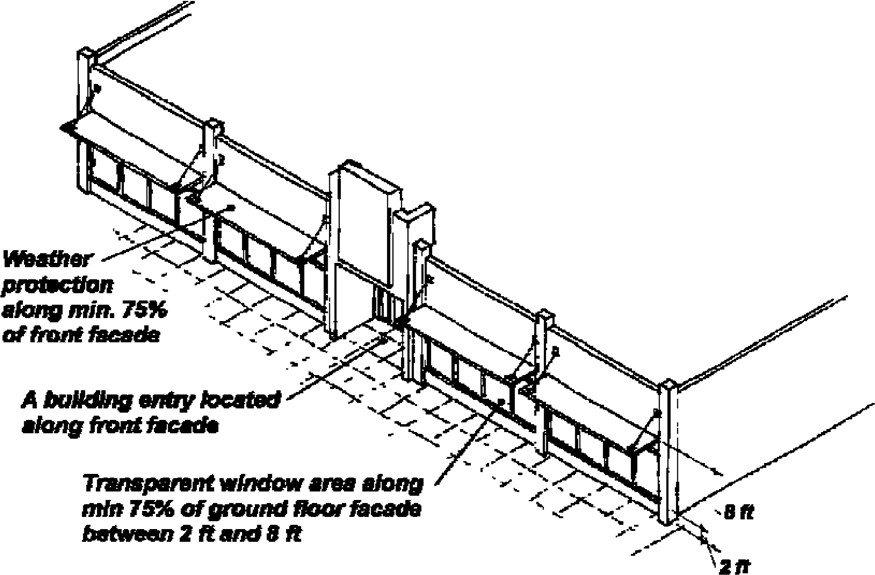
Figure 4-2. Pedestrian-oriented facade requirements.
(c) Commercial and Mixed Use Buildings. Such buildings shall be located and oriented towards the street. To meet this requirement, the building entries and windows must face the street. Specific provisions and exceptions include:
(i) Parking lots shall not be located between the building and the street.
(ii) Building facades facing the street must have transparent windows or doors covering at least 25 percent of the ground floor facade between four and eight feet above the level of the sidewalk. Departures will be considered by the director provided the proposed building configuration and design enhances the pedestrian environment of the neighborhood.
(iii) For sites that front on more than one public street, the buildings are encouraged to orient to both streets. Priority shall be given to 87th Avenue NE or other streets that are more visible and/or provide a better opportunity for increased pedestrian activity.
(iv) For large sites (over two acres) featuring multiple buildings, developments shall configure buildings to create focal points for pedestrian activity on the site. However, no more than 50 percent of the 87th Avenue NE frontage may be occupied by vehicular access or parking. Exceptions: An increased percentage of parking or vehicular access along the street front may be allowed where the configuration allows the development to better meet the intent of the standards and guidelines. For example, if the configuration allows for a centralized plaza surrounded by a concentration of retail uses, an increase in the percentage of parking along the street front would be allowed.
(v) Development fronting on Soper Hill Road and 35th Street NE may be exempted from this requirement.
(vi) Where unique topographical or environmental conditions make conformance difficult or undesirable, the director shall allow alternative building placement and/or orientation, provided the overall development meets the intent of the standards and guidelines.
For all departures or exemptions noted above, the development shall incorporate design features that add visual interest to the pedestrian environment, maintain visual continuity along the streets and enhance pedestrian access.
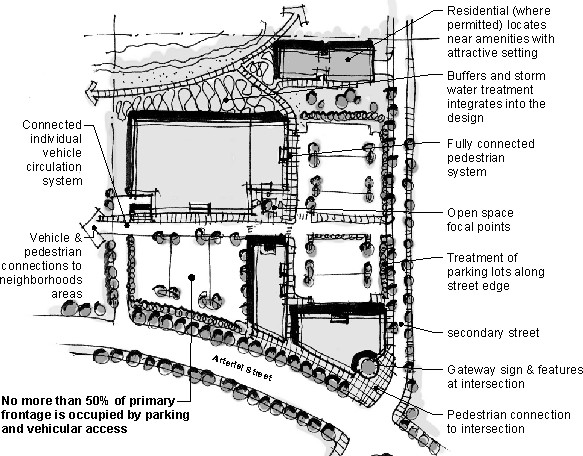
Figure 4-3. For large sites featuring multiple buildings, no more than 50 percent of the primary public street frontage may be occupied by vehicular access or.
(d) Front Setbacks for Multifamily Buildings. Ground floor multifamily residential uses and residential buildings shall be set back at least 10 feet from the sidewalk.
(e) Multifamily Building Location and Orientation. Multifamily residential buildings shall be located and oriented towards streets and not parking lots or adjacent properties. Specifically:
(i) Parking lots shall not be located between the building and the street.
(ii) The primary building entry shall face the street. Alternatively, building entries that face onto a courtyard which is oriented towards the street are acceptable.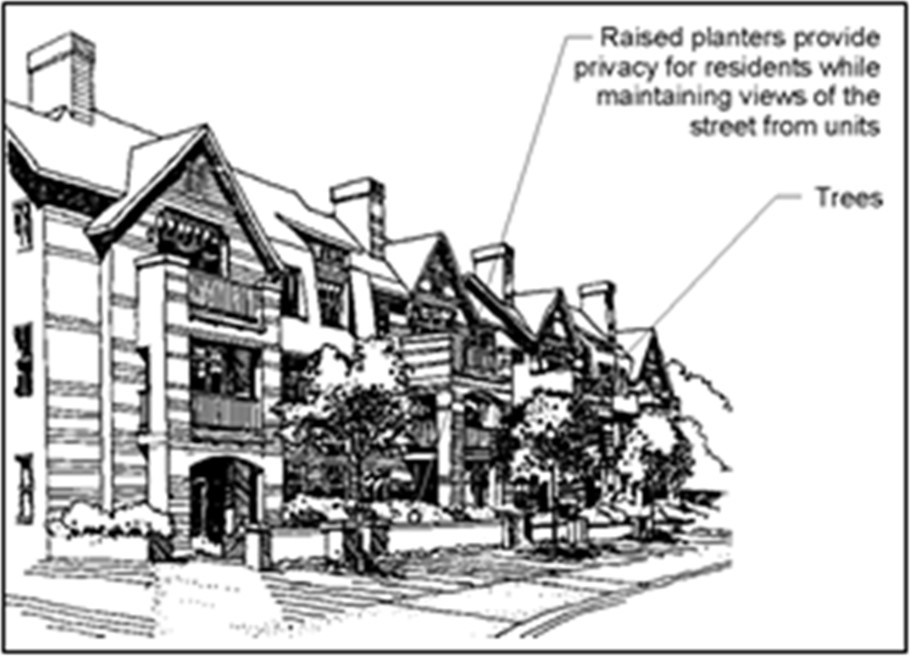
Figure 4-4. Multifamily building oriented towards the street.
(iii) Buildings with individual ground floor entries should face the street to the extent possible. Again, configurations where entries face onto a courtyard or open space that is oriented to the street are acceptable.
(iv) Buildings shall also provide windows that face the street to provide “eyes on the street” for safety. To meet this requirement, at least 15 percent of the facade shall be occupied by transparent windows or doors. See Figure 4-5 for clarification on how transparency requirements are calculated.
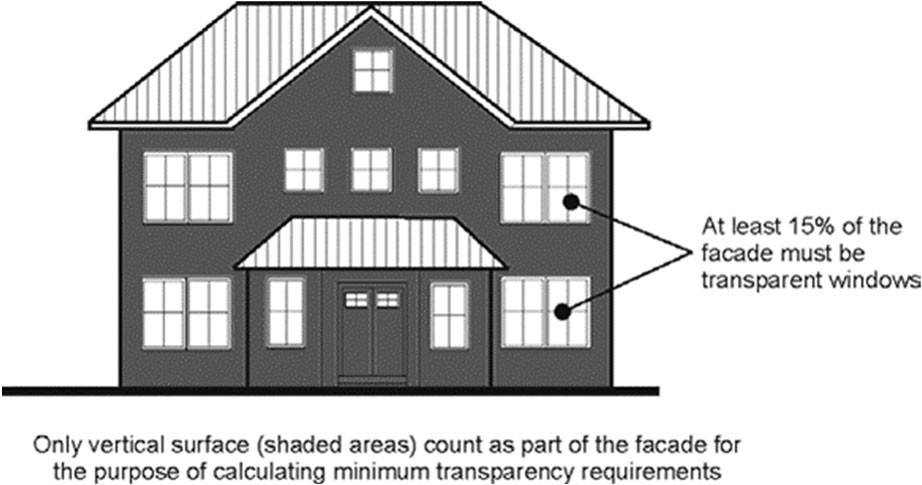
Figure 4-5. Facade transparency requirements.
(v) Departures will be considered by the director provided they meet the intent of the standards and guidelines. For example, alternative configurations may be more desirable to take advantage of special views or special environmental features.

Figure 4-6. Good and bad multifamily development configurations.
(Ord. 3230 § 2 (Exh. A), 2022).
22C.070.090 Street corners.
(1) Intent.
(a) To enhance the character and identity of the area.
(b) To enhance the pedestrian environment at street corners.
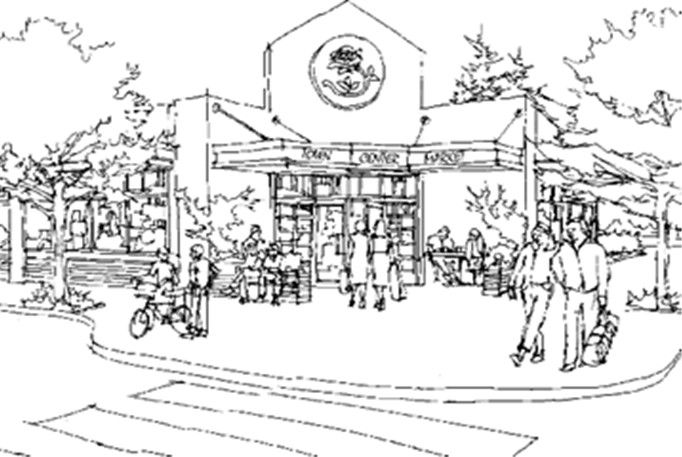
Figure 4-7. This example includes both a building located towards the street corner and a small pedestrian-oriented space.
(2) Standards and Guidelines for Street Corner Treatment.
(a) Street corner developments are subject to the city’s site distance standards.
(b) All development proposals located at street corner sites in the community business and mixed use zones shall include at least one of the design treatments described below (in order of preference):
(i) Locate a building towards the street corner (within 15 feet of the corner property line).
(ii) Provide pedestrian-oriented space (as defined in MMC 22C.070.100(2)(c)) at the corner leading directly to a building entry or entries.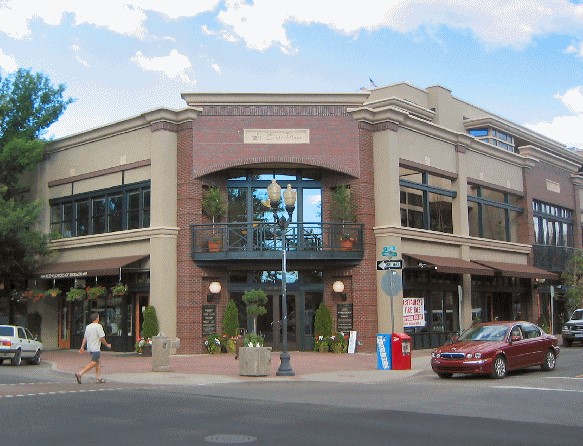
Figure 4-8. Street corner building example.
If subsection (2)(b)(i) or (ii) of this section is not feasible or desirable per the director, consider the following options:
(iii) Install substantial landscaping (at least 30 feet by 30 feet or 900 square feet of ground surface area with trees, shrubs, and or ground cover). The space may include a special architectural element, such as a trellis, to add identity or demarcation of the area. Such an architectural element may have a sign incorporated into it (as long as such sign does not identify an individual business or businesses);
(iv) Other treatments will be considered, provided they meet the intent of the standards and guidelines as determined by the director.

Figure 4-9. This street corner successfully combines landscaping with architectural elements. Signage demarcates the area, not an individual store.
(Ord. 3230 § 2 (Exh. A), 2022).
22C.070.100 Open space.
(1) Intent.
(a) To provide a variety of accessible and inviting pedestrian-oriented areas to attract shoppers to commercial areas and enrich the pedestrian environment.
(b) To create usable, accessible, and inviting open spaces for residents.
(c) To create open spaces that enhance the residential setting.

Figure 4-10. Pedestrian-oriented spaces are a critical element of successful commercial and mixed use developments.
(2) Standards and Guidelines.
(a) Developments are subject to Chapter 22D.020 MMC, Parks, Recreation, Open Space and Trail Impact Fees and Mitigation, until otherwise noted.
(b) Open Space for Nonresidential Uses. Nonresidential uses shall provide pedestrian-oriented space, defined in subsection (2)(c) of this section, in conjunction with new development according to the formula below.
(i) Requirement. Two percent of the applicable site plus one percent of the nonresidential building floor area (excluding structured parking areas).
(ii) Applicable site refers to that portion of a property or properties that is proposed for development.
(iii) For the purposes of this section, all required sidewalks and walkways shall not count as pedestrian-oriented space. However, the director may allow those portions of sidewalks or walkways widened beyond minimum requirements to count towards the required pedestrian-oriented space as long as such space meets the definition of pedestrian-oriented space.
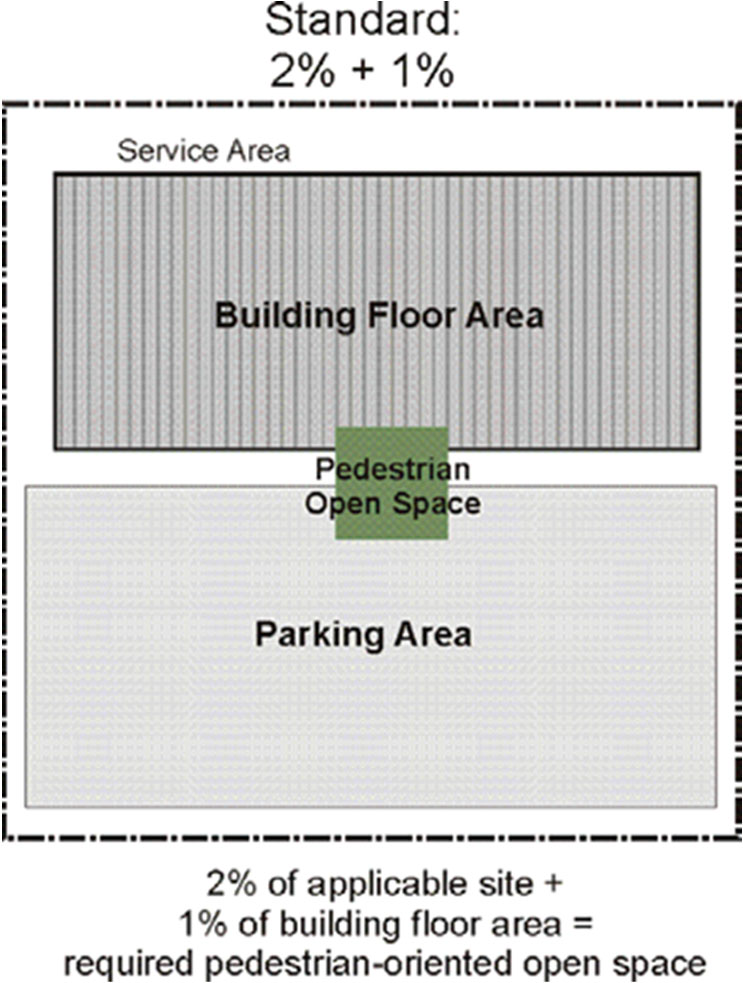
Figure 4-11. An illustration of how much pedestrian-oriented space would be required for a typical grocery story served by surface parking.
(c) Pedestrian-Oriented Spaces. These are predominantly hard-surfaced plaza- or courtyard-type spaces provided with commercial and mixed use buildings.
(i) To qualify as a pedestrian-oriented space, an area shall have:
(A) Pedestrian access to the abutting structures from the street, private drive, or a nonvehicular courtyard.
(B) Paved walking surfaces of either concrete or approved unit paving.
(C) Pedestrian-scaled lighting (no more than 15 feet in height) at a level averaging at least two foot-candles throughout the space. Lighting may be on-site or building-mounted lighting.
(D) At least two linear feet of seating area (bench, ledge, etc.) or one individual seat per 60 square feet of plaza area or open space (up to 50 percent of seats may be movable).
(E) Be sited in areas with significant pedestrian traffic to provide interest and security, such as adjacent to a building entry.
(F) Landscaping components that add seasonal interest to the space. The following features are encouraged in pedestrian-oriented space and may be required by the director for a space to meet the intent of the standards and guidelines.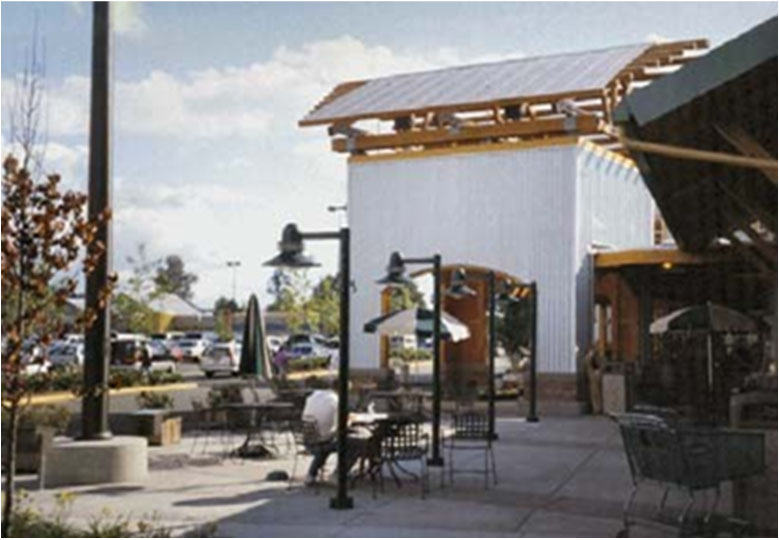
Figure 4-12. Pedestrian-oriented space in front of a grocery store.
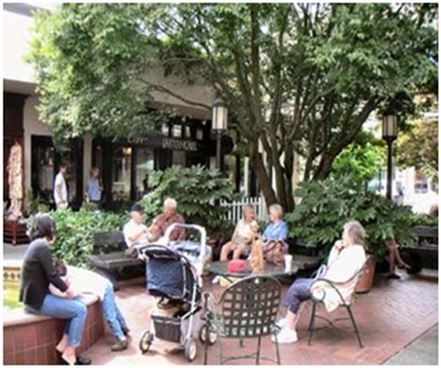
Figure 4-13. Pedestrian-oriented space in a shopping.
(ii) The following features are encouraged in pedestrian-oriented space and may be required by the director for a space to meet the intent of the standards and guidelines:
(A) Pedestrian amenities, such as a water feature, drinking fountain, tables, and/or distinctive paving or artwork.
(B) A pedestrian-oriented building facade on some or all buildings facing the space.
(C) Consideration of the sun angle at noon and the wind pattern in the design of the open space.
(D) Transitional zones along building edges to allow for outdoor eating areas and a planted buffer.
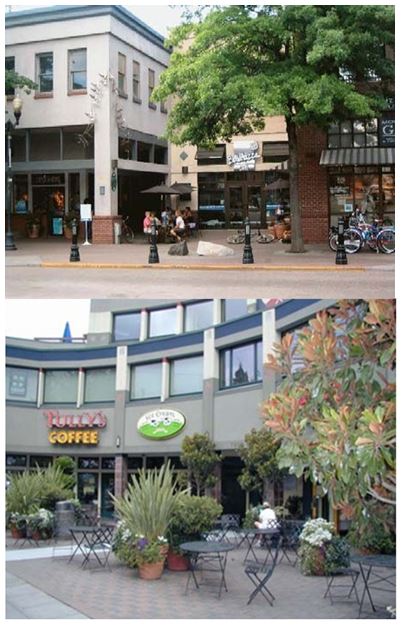
Figure 4-14. Examples of pedestrian-oriented spaces.
(iii) The following features are prohibited within pedestrian-oriented space:
(A) Asphalt or gravel pavement.
(B) Adjacent unscreened parking lots.
(C) Adjacent chain link fences.
(D) Adjacent blank walls.
(E) Adjacent unscreened dumpsters or service areas.
(F) Outdoor storage or retail sales that do not contribute to the pedestrian.
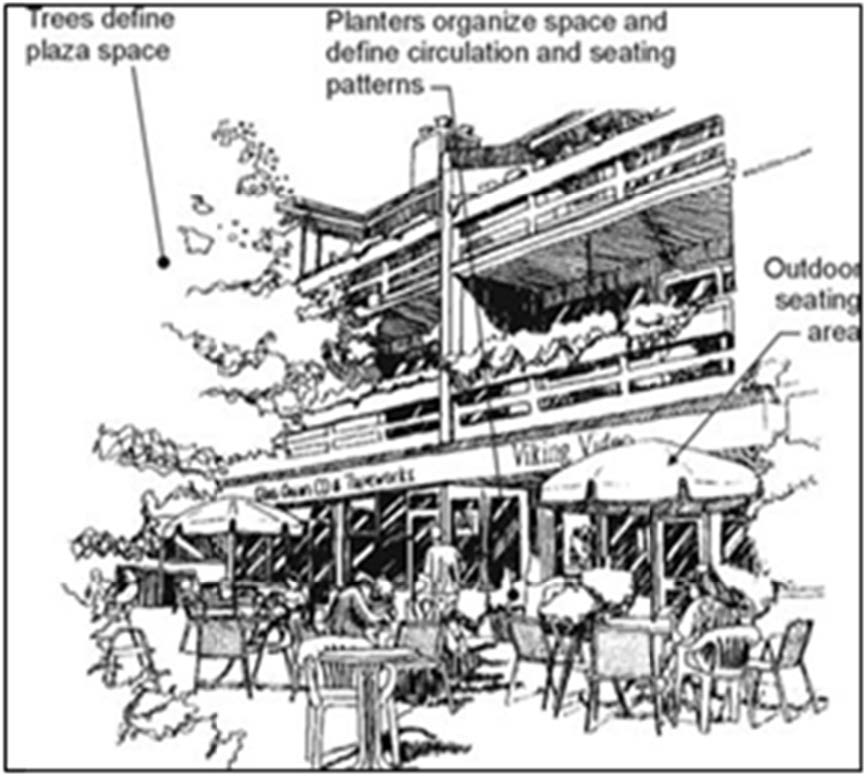
Figure 4-15. Pedestrian-oriented space example.

Figure 4-16. Large example of pedestrian- oriented space.
(d) Multifamily Open Space. Multifamily residential uses shall provide open space equivalent to at least 20 percent of the building’s livable floor area. The required area may be satisfied with one or more of the elements listed below:
(i) Common open space accessible to all residents shall count for up to 100 percent of the required open space. This includes landscaped courtyards or decks, gardens with pathways, children’s play areas, or other multipurpose recreational and/or green spaces. Special requirements and recommendations for common spaces include the following:
(A) Space shall be large enough to provide functional leisure or recreational activity per the director. For example, long narrow spaces (less than 20 feet wide) rarely, if ever, can function as usable common space.
(B) Consider space as a focal point of development.
(C) Space (particularly children’s play areas) shall be visible from dwelling units and positioned near pedestrian activity.
(D) Space shall feature paths, plantings, seating, lighting and other pedestrian amenities to make the area more functional and enjoyable.
(E) Individual entries shall be provided onto common open space from adjacent ground floor residential units. Small, semi-private open spaces for adjacent ground floor units that maintain visual access to the common area are strongly encouraged to enliven the space.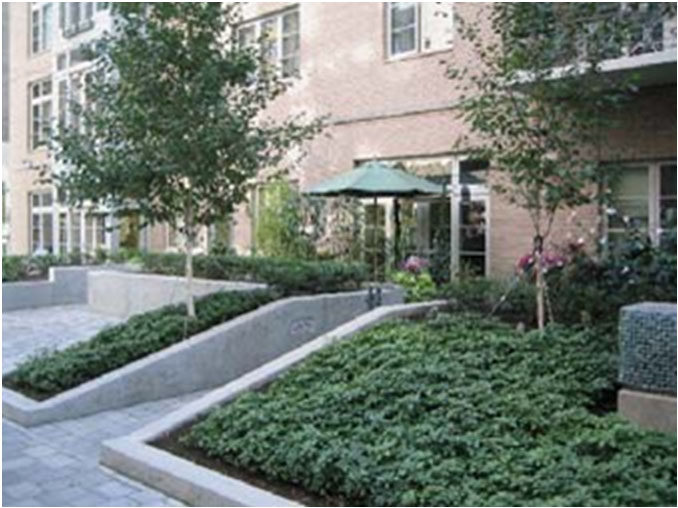
Figure 4-17. A residential courtyard providing semi-private patio spaces adjacent to individual units.
(F) Separate common space from ground floor windows, streets, service areas and parking lots with landscaping and/or low-level fencing, where desirable.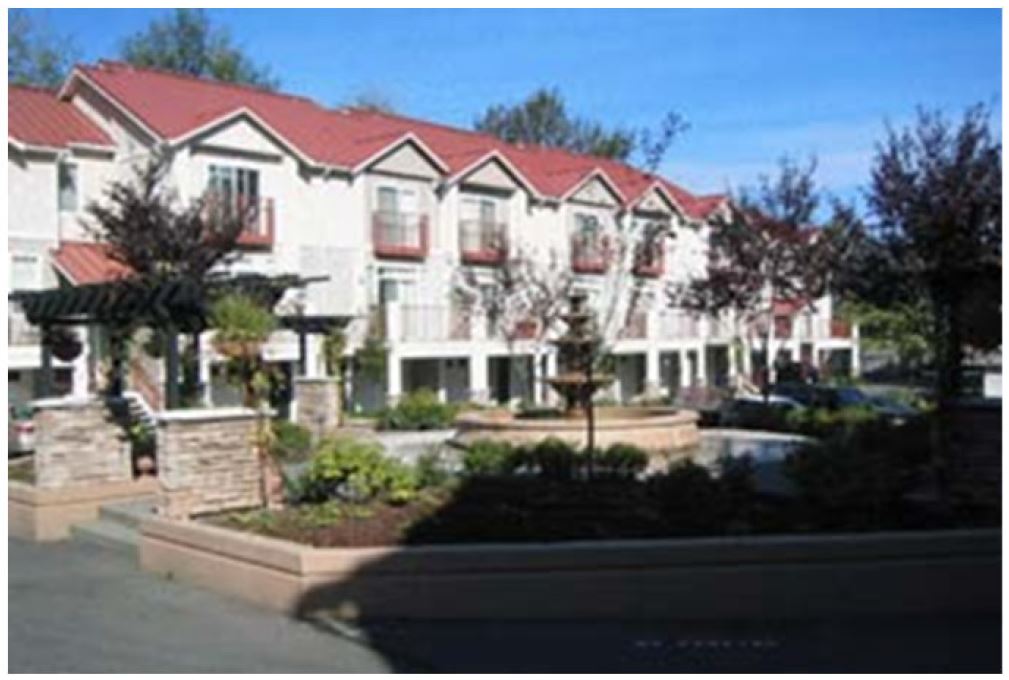
Figure 4-18. Common open space for a townhouse development.
(G) Space should be oriented to receive sunlight, facing east, west, or (preferably) south, when possible.
(H) Required setbacks, landscaping, driveways, parking, or other vehicular use areas shall not be counted toward the common space requirement.
(I) Rooftop decks shall not be considered as common open space for the purpose of calculating.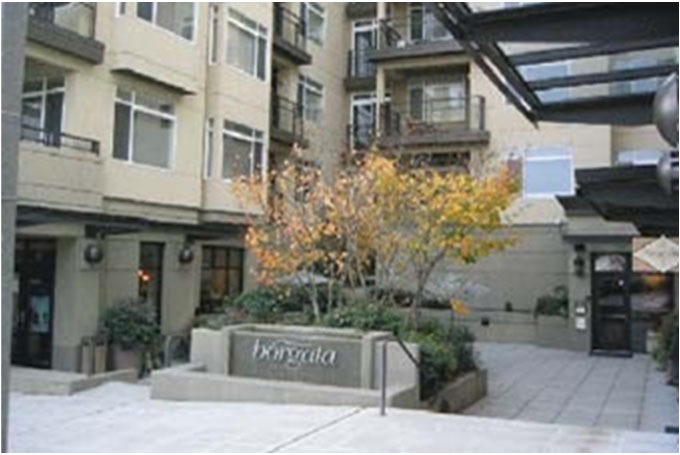
Figure 4-19. A courtyard for a mixed use development providing an amenity to residents and the adjacent coffee shop.
(ii) Individual balconies may be used to meet up to 50 percent of the required open space. To qualify as open space, balconies shall be at least 35 square feet, with no dimension less than four feet, to provide a space usable for human activity.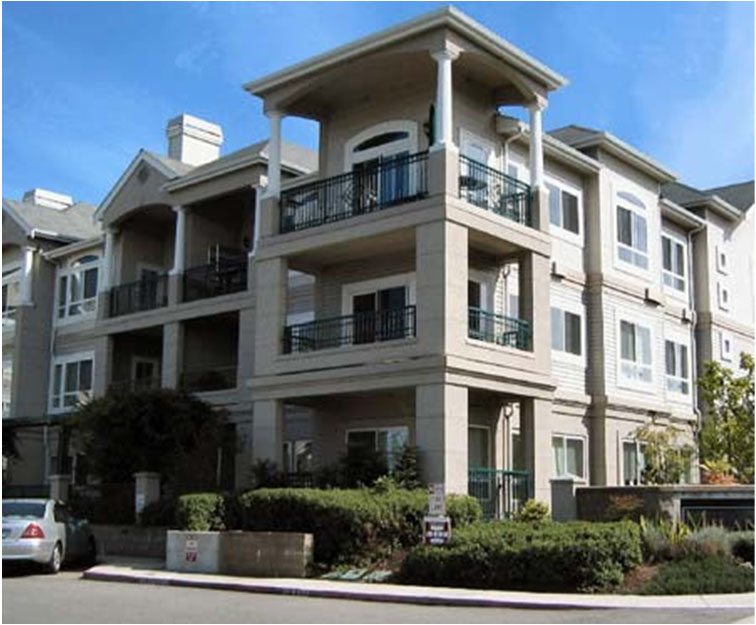
Figure 4-20. Balconies provide private, usable open space for residents.
(iii) Natural areas that function as an amenity to the development may count for up to 50 percent of the required open space, subject to the following requirements and recommendations:
(A) The natural area shall be accessible to all residents. For example, safe and attractive trails provided along or through the natural area where they could serve as a major amenity to the development.
(B) Steep slopes, wetlands, or similar unbuildable areas shall not be counted in the calculations for required open space unless they provide a visual amenity for all units, as determined by the director.
(iv) Stormwater retention areas may be counted for up to 50 percent of the required open space if the facility has natural looking edges, natural vegetation, and no fencing except along the property line. The design of such areas shall go well beyond functional stormwater requirements per the director in terms of the area involved and the quality of landscaping and resident amenities. The side slope of the stormwater facilities shall not exceed a grade of 1:3 (one vertical to three horizontal) unless slopes are existing, natural, and covered with vegetation.
(v) Children’s play equipment and recreational activity space for children and/or teens and parent seating areas are encouraged in residential complexes with 20 or more units. Exceptions: age-restricted senior citizen housing, developments located within one-quarter mile of a public park that features a play area, mixed use developments, and developments reserved for student housing.
Figure 4-21. Children’s play area incorporated into a multifamily development.
(e) Townhouse Open Space. Townhouses and other ground based multifamily residential units with individual exterior entries must provide at least 200 square feet of private open space per dwelling unit adjacent to, and directly accessible from each dwelling unit. This may include private balconies, individual rear yards, landscaped front yards, and covered front porch areas. Exception: Common open space designed per subsection (2)(d)(i) of this section may substitute for up to 50 percent of each unit’s required private or semi-private open space on a square foot per square foot basis.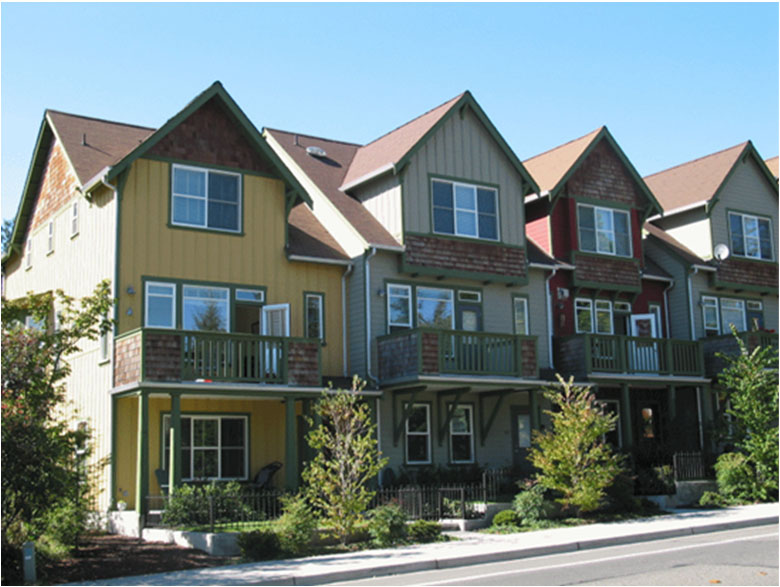
Figure 4-22. These townhouses provide balconies and semi-private yard space.

Figure 4-23. Example townhouse configuration with a combination of private open spaces adjacent to units and larger common open space accessible to all units.
(Ord. 3230 § 2 (Exh. A), 2022).
22C.070.110 Side and rear yard treatments.
(1) Since the community business and mixed use zones provide for a wide range of use types, design treatments along the side and rear yards will be critical in ensuring compatibility between developments. Thus the following standards and guidelines are intended to provide clear objectives (intent statements) and a tool box of options to choose the appropriate design treatment for the specific situation.
(2) Intent.
(a) To provide for compatibility between uses.
(b) To encourage coordinated development between compatible uses.
(c) To provide for a visual and physical separation of residential uses from commercial uses, where desired.
(d) To maximize privacy for residential uses.
(e) To allow for sufficient solar access to residential uses located along a side or rear yard.
(3) Standards and Guidelines.
(a) Side and Rear Setbacks.
(i) Community Business and Mixed Use Zones.
(A) Zero feet for windowless fire walls up to 20 feet in height.
(B) Fifteen feet for all other buildings up to 35 feet in height. One foot of additional setback is required for each foot of height over 35 feet.
(C) Reduced setbacks will be considered provided the design treatment meets the intent of the standards and guidelines with respect to the subject property and current or vested uses on the adjacent property.
(ii) Other Zones.
(A) Fifteen feet for all other buildings up to 35 feet in height. One foot of additional setback is required for each foot of height over 35 feet.
(B) Reduced setbacks will be considered provided the design treatment meets the intent of the standards and guidelines with respect to the subject property and current or vested uses on the adjacent property.
(b) Solar Access and Privacy.
(i) Buildings or portions thereof containing dwelling units whose solar access is only from the applicable side of the building (facing towards the side property line) shall be set back from the applicable side or rear property lines at least 15 feet. See Figure 4-24.
(ii) Transparent windows shall occupy no more than 10 percent of any facade within 15 feet of the side or rear property line.
(iii) Balconies or rooftop decks within 15 horizontal feet of a side property line must utilize opaque guard rails to minimize privacy impacts to adjacent properties.
(iv) Departures may be granted to the above standard provided the design treatment meets the intent of the standards and guidelines with respect to the subject property and current or vested uses on the adjacent property. Where the adjacent property is undeveloped or underdeveloped (as determined by the director), the proposed departure treatment should not hinder permitted development opportunities on said adjacent property.

Figure 4-24. Side yard setback standards and guidelines for multifamily buildings depend on their dwelling units’ solar access.
(c) Side and Rear Yard Buffer Requirements. All developments shall incorporate one or more of the following design options:
(i) Provide Landscaping Type L1 (see MMC 22C.120.110) at least 10 feet deep along side and rear property lines where adjacent to residential zoned land.
(ii) Provide Landscaping Type L2 or L3 (see MMC 22C.120.110) at least 10 feet deep along side and rear property lines where a visual separation of uses is desired. The width of the planting strip may be reduced to five feet if used in conjunction with a screen fence approximately six feet tall.
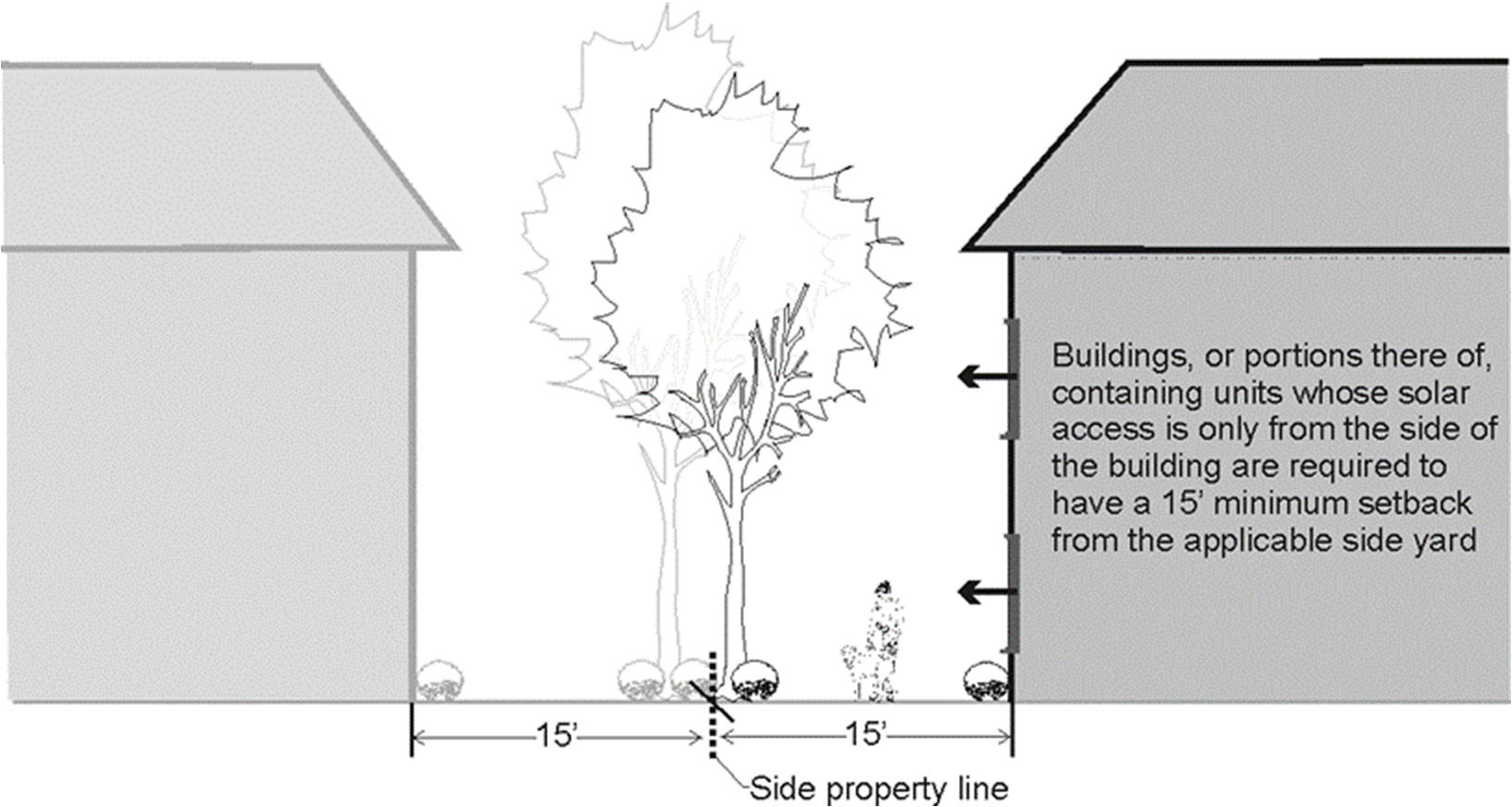
Figure 4-25. Side and rear yard design treatment options.
(iii) Other treatments that meet the intent of the standards and guidelines as approved by the director. Factors that must be considered in determining the appropriate treatment include views, applicable uses, connectivity, and desired level of privacy. Some options include:
(A) Shared pathway along or adjacent to the property line with landscaping. This is a desirable configuration that can enhance pedestrian circulation and provides an efficient use of space. This treatment requires a recorded agreement with applicable adjacent property owner(s).
(B) Tall privacy fence or hedge (up to six feet tall). This is most applicable for commercial uses adjacent to multifamily uses – where the fence does not negatively impact views from the street or nearby properties.
(C) Low screen fence or hedge (up to three feet tall). This may be a more attractive option where a taller fence might provide negative visual impacts.
(D) Where allowed in the specific zoning district, buildings sited up to the property line may be acceptable provided material, color, and/or textural changes to the building wall are included that add visual interest to the wall. (Ord. 3230 § 2 (Exh. A), 2022).
Article V. Vehicular Access and Parking
22C.070.120 On-site vehicular access and connections.
(1) Intent.
(a) To create a safe, convenient, and efficient network for vehicular circulation and parking.
(b) To enhance access to the area from the surrounding neighborhood.
(c) To upgrade the appearance of interior access roads.
(d) To minimize negative impacts of driveways on the streetscape and pedestrian environment.
(2) Standards and Guidelines.
(a) Vehicular Circulation Network. Developments shall provide a safe and convenient network of vehicular circulation that connects to the surrounding road/access network and provides the opportunities for future connections to adjacent parcels, where desirable and applicable.
(b) Internal Access Roads. Commercial and mixed use developments of large sites (more than five acres) are encouraged to design interior access roads to look and function more like public streets. This includes planting strips and street trees on both sides, sidewalks on one or both sides, and perpendicular parking on one or both sides. These features may be required by the director based on the nature of adjacent uses and anticipated pedestrian activity.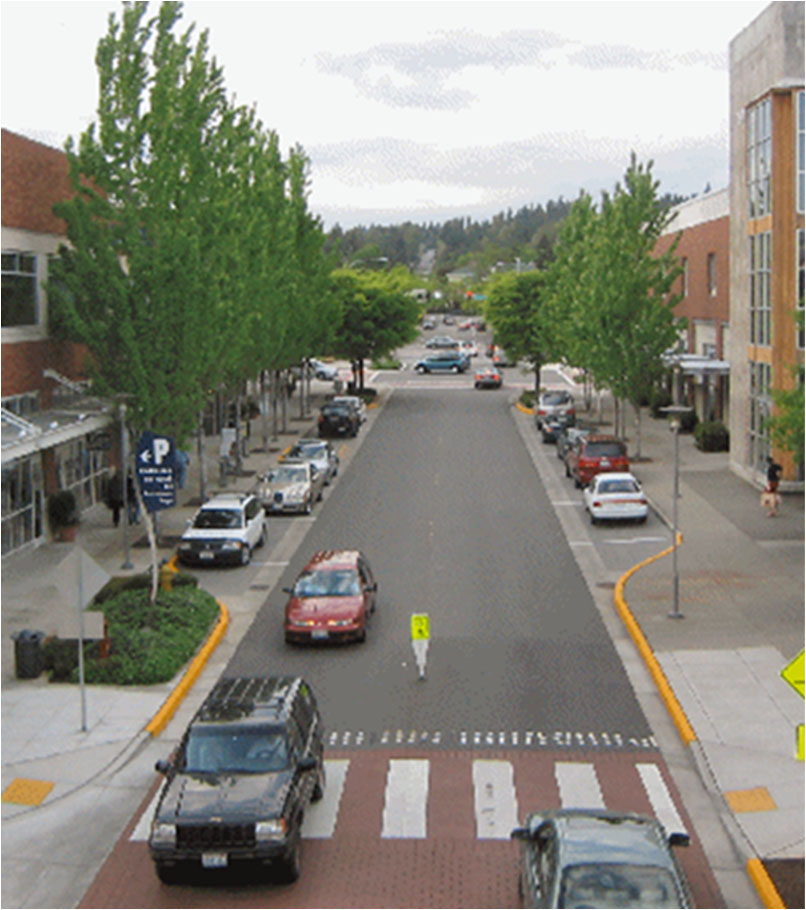
Figure 5-1. Internal access road designed to look and function like a public street. Note on-street parking, lighting, street trees, and sidewalks.
(Ord. 3230 § 2 (Exh. A), 2022).
22C.070.130 Parking.
(1) Intent.
(a) To provide flexibility in how developments accommodate parking.
(b) To maintain active pedestrian environments along streets by placing parking lots primarily in back of buildings.
(c) To ensure safety of users of parking areas, increase convenience to businesses, and reduce the impact of parking lots wherever possible.
(d) To physically and visually integrate parking garages with other uses.
(e) To reduce the overall impact of parking garages when they are located in proximity to the designated pedestrian environment.
(2) Standards and Guidelines.
(a) On-Street Parking Spaces. On-street parking spaces adjacent to uses shall count towards off-street parking requirements.
(b) Shared Parking. Shared parking between and among uses is encouraged and shall be permitted in accordance with Chapter 22C.130 MMC. Coordination between different uses and property owners to provide for shared structured parking facilities is encouraged.
(c) Parking Lots at Intersections. Parking lots shall not be located adjacent to intersections. Exceptions may be granted by the director where alternative design treatments, such as special landscaping and architectural components adjacent to the street corner, enhance the visual character of the street and the pedestrian environment and where the project meets all other applicable design standards and guidelines.
(d) Parking Structure Standards.
(i) Parking structures adjacent to 87th Street shall provide space for ground-floor commercial uses along street frontages for a minimum of 75 percent of the frontage width.
(ii) Parking structures adjacent to streets and not featuring a pedestrian-oriented facade shall be set back at least 10 feet from the sidewalk and feature landscaping between the sidewalk and the structure. This shall include a combination of evergreen and deciduous trees, shrubs, and groundcover. Alternative measures shall be considered, provided the treatment meets the intent of the standards and guidelines.
(iii) Parking garage entries shall be designed and sited to complement, not subordinate, the pedestrian entry. If possible, locate the parking entry away from the primary street, to either the side or rear of the building.
(iv) Parking within the building should be enclosed or screened through any combination of landscaping berms, walls, decorative grilles, or trellis work with landscaping. Facade openings that resemble windows can be attractive and are permitted at the ground and upper levels.
(v) Parking garages visible from a street shall be designed to be complementary with adjacent buildings on site. This can be accomplished by using similar building forms, materials, fenestration patterns, and/or details to enhance garages.
(vi) An unbroken series of garage doors is not permitted on any street frontage.

Figure 5-2. A good example of a parking garage entrance for a mixed use development.
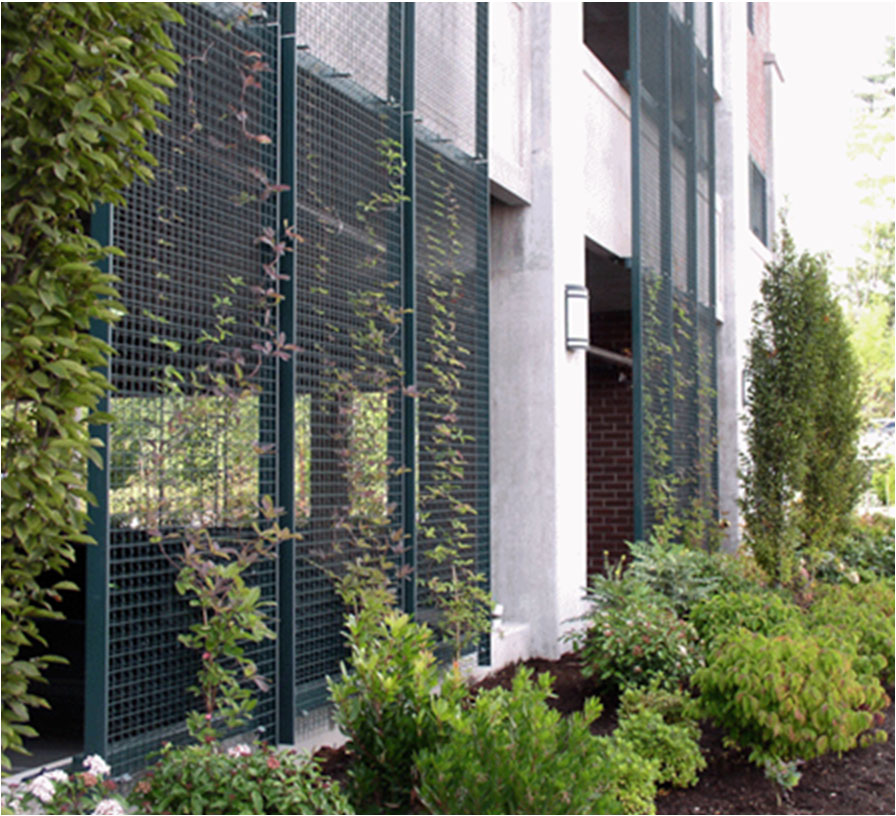
Figure 5-3. A good parking garage example with landscaping elements to screen cars and provide visual interest.
(Ord. 3230 § 2 (Exh. A), 2022).
Article VI. Pedestrian Environment
22C.070.140 Sidewalk and pathway standards and guidelines.
(1) Intent.
(a) To provide safe, convenient, and comfortable pedestrian circulation.
(b) To enhance the character and identity of the area.
(c) To promote walking, bicycling, and transit use.
(2) Standards and Guidelines.
(a) Sidewalk Design. Developments shall utilize appropriate sidewalk widths, materials, designs, and construction standards and guidelines to enhance pedestrian access and complement city life. Specifically:
(i) Sidewalks shall be constructed per the city’s engineering design and development standards (EDDS), unless otherwise directed by these design standards and guidelines.
(ii) Sidewalk widths shall follow the streetscape design standards and the city’s EDDS.
Outdoor business activities are permitted within the public right-of-way only if additional public sidewalk is provided greater than the required width. No business activities are allowed in the minimum required width. Also see Figure 6-1 for other sidewalk width considerations.
(iii) Sidewalk materials, colors, and textures shall be determined by the director, based on the following:
(A) Whiskey Ridge streetscape design plan.
(B) City’s engineering design and development standards.
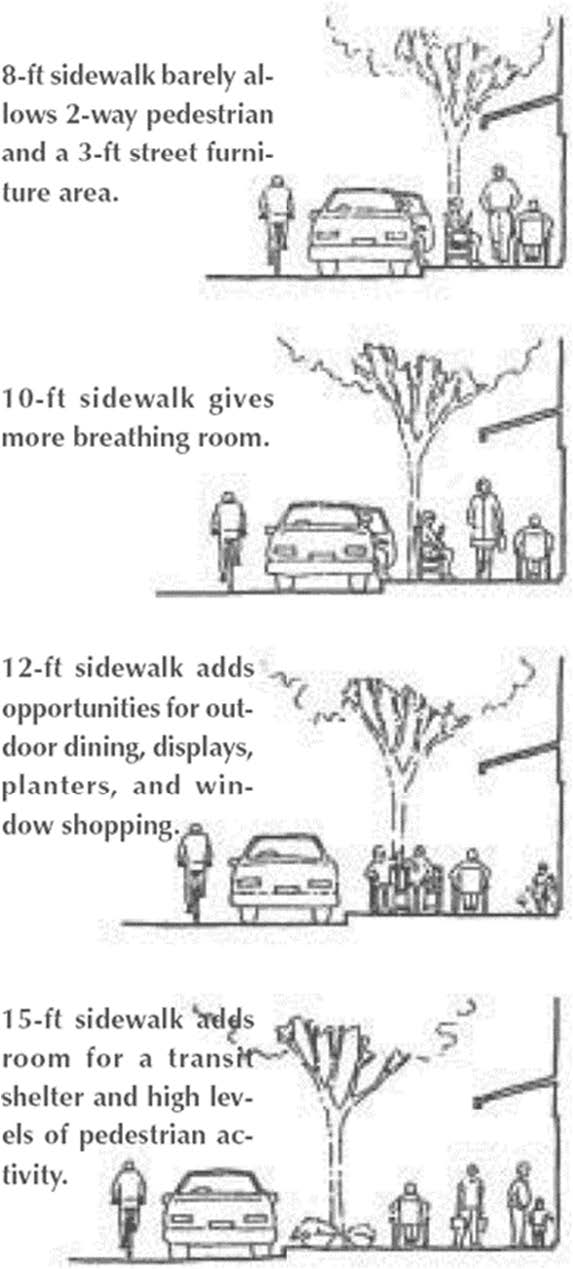
Figure 6-1. Appropriate sidewalk widths.
(b) Internal Pedestrian Walkways.
(i) Internal pathways along the front facade of mixed use and retail buildings 100 feet or more in length (measured along the facade) that are not located adjacent to a street must be at least 12 feet wide with eight feet minimum unobstructed width and include the following:
(A) Street trees, as approved by the director, should be placed at an average of 30 feet on-center and placed in grates (except where trees are placed in planting strips). Breaks in the tree coverage will be allowed near major building entries to enhance visibility.
However, no less than one tree per 60 lineal feet of building facade must be provided.
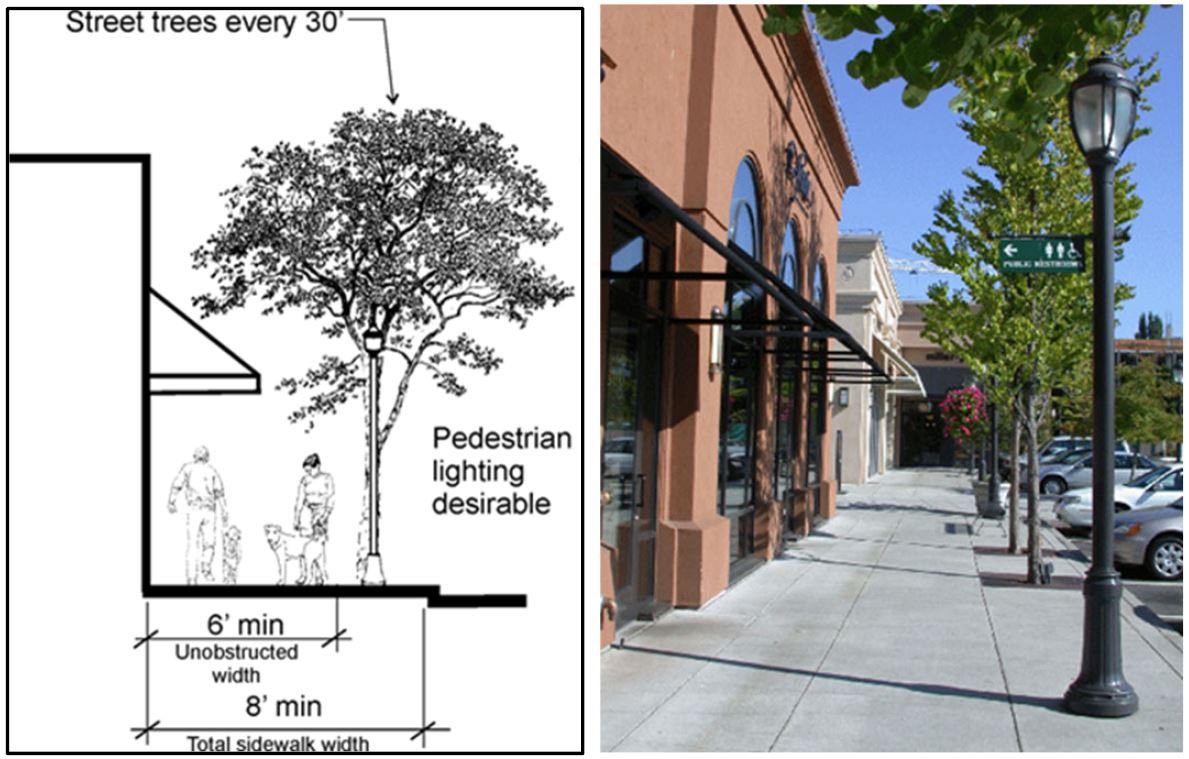
Figure 6-2. Design standards for internal walkways along storefronts and a photo example.
(B) Planting strips may be used between any vehicle access or parking area and the pathway; provided, that the required trees are included and the pathway is at least eight feet in width and the combined pathway and planting strip is at least 14 feet in width.
Figure 6-3. Pathway/landscaping requirements adjacent to nonpedestrian-oriented facades.
(C) Pedestrian-scaled lighting may be used as a substitute to the required street trees subject to director approval, provided they are used at the same intervals.
(ii) For all other interior pathways, the applicant shall successfully demonstrate that the proposed walkway is of sufficient width to accommodate the anticipated number of users. See Figure 6-1 for considerations.
(iii) Pedestrian walks shall be separated from structures by at least three feet of landscaping, except where the adjacent building features a pedestrian-oriented facade. The director shall consider alternative treatments to provide attractive pathways. Examples include the use of planter boxes and/or vine plants on walls, sculptural, mosaic, bas-relief artwork, or other decorative wall treatments that meet the intent of the standards and guidelines.
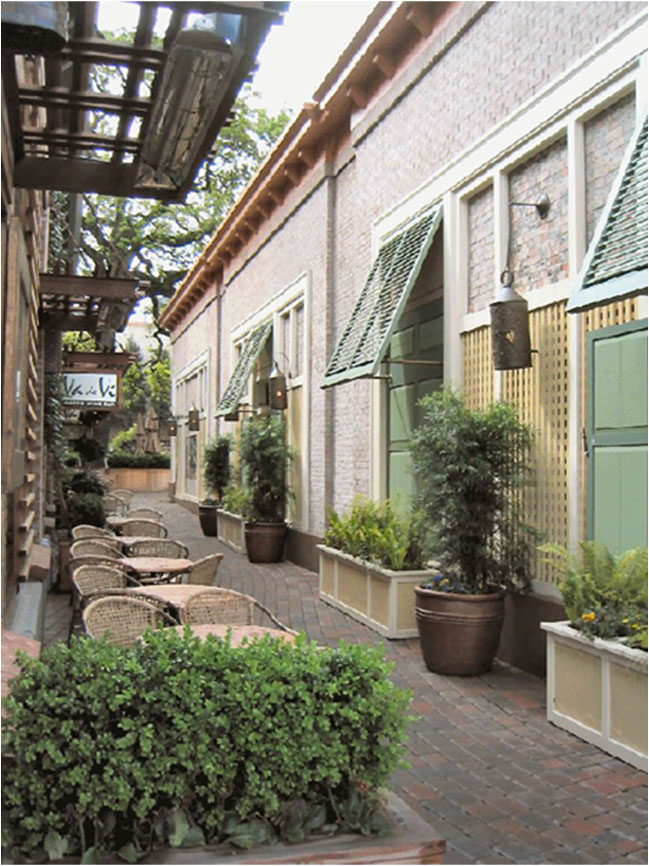
Figure 6-4. A good example of wall design treatment that would qualify for a departure from subsection (2)(b)(iii) of this section.
(Ord. 3230 § 2 (Exh. A), 2022).
22C.070.150 Pedestrian circulation.
(1) Intent.
(a) To create a network of linkages for pedestrians to improve safety and convenience and enhance the pedestrian environment.
(2) Standards and Guidelines.
(a) Pedestrian Access. All buildings shall have clear pedestrian access to the sidewalk. Where a use fronts two streets, access shall be provided from the road closest to the main entrance, preferably from both streets. Buildings with entries not facing the street should have a clear and obvious pedestrian access way from the street to the entry.
(b) Parking Lot Pathways. A paved walkway or sidewalk shall be provided for safe walking areas through parking lots greater than 175 feet long (measured either parallel or perpendicular to the street front). Walkways shall be provided for every three parking aisles or a distance of less than 175 feet shall be maintained between paths (whichever is more restrictive). Such access routes through parking areas shall be separated from vehicular parking and travel lanes by use of contrasting paving material, which may be raised above the vehicular pavement. Speed bumps may not be used to satisfy this requirement. Trees and pedestrian-scaled lighting (maximum 15 feet in height) shall be used to clearly define pedestrian walkways or other pedestrian areas within the parking area.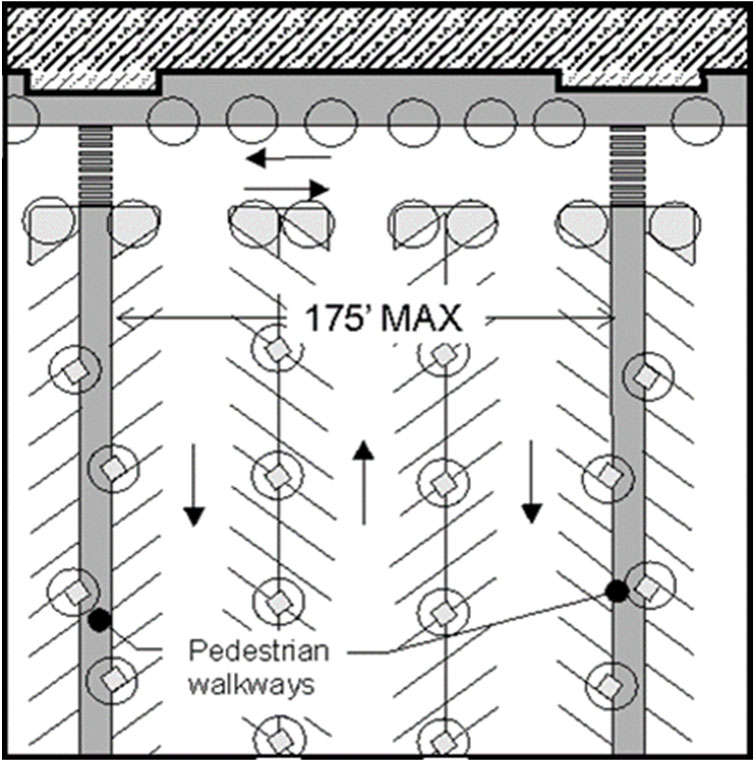
Figure 6-5. Parking lot pathway requirements.
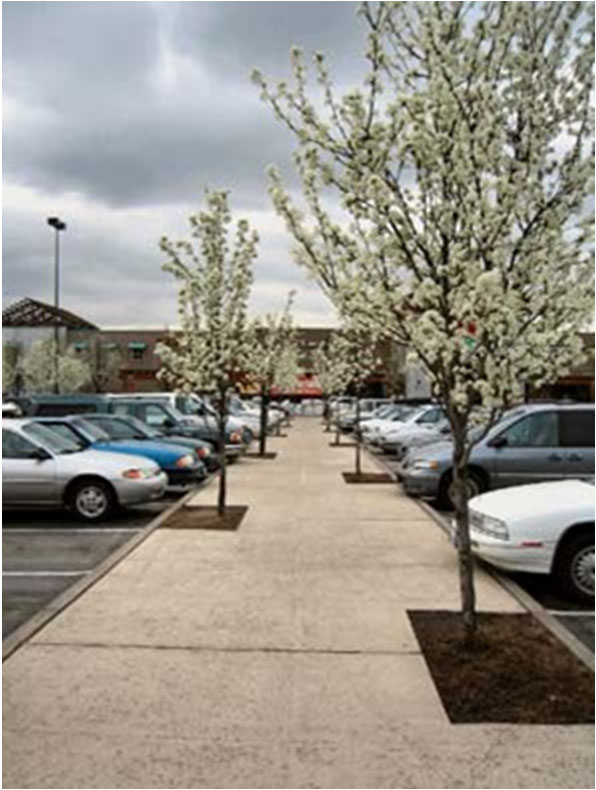
Figure 6-6. Parking lot pathway example.
(Ord. 3230 § 2 (Exh. A), 2022).
22C.070.160 Lighting.
(1) Intent.
(a) To create attractive spaces that unify the building and street environments that are inviting, comfortable, and safe for pedestrians.
(b) To ensure visibility for pedestrians and automobiles.
(2) Standards and Guidelines.
(a) Lighting Standards and Guidelines. Provide appropriate lighting levels in all areas used by pedestrians or automobiles, including building entries, walkways, parking areas, circulation areas, and other open space areas.
New developments shall provide site lighting that meets the following design criteria through implementing measures such as:
(i) All public areas shall be lighted with average minimum and maximum levels as follows:
(A) Minimum (for low or nonpedestrian and vehicular traffic areas) of one-half foot-candles;
(B) Moderate (for moderate or high volume pedestrian areas) of one to two foot-candles; and
(C) Maximum (for high volume pedestrian areas and building entries) of four foot-candles.
(ii) Lighting shall be provided at consistent levels, with gradual transitions between maximum and minimum levels of lighting and between lit areas and unlit areas. Highly contrasting pools of light and dark areas shall be avoided.
(iii) Parking lot lighting fixtures shall be nonglare and mounted no more than 25 feet above the ground, with lower fixtures preferable so as to maintain a human scale. Requests for higher lighting fixtures may be considered with the approval of the director. All fixtures over 15 feet in height shall be fitted with a full cut-off shield.
(iv) Pedestrian-scaled lighting (light fixtures no taller than 15 feet) is encouraged in areas with high anticipated pedestrian activity. Lighting shall enable pedestrians to identify a face 45 feet away in order to promote safety.
(v) Lighting should not be permitted to trespass onto adjacent private parcels nor shall light source (luminaire) be visible at the property line. All building lights shall be directed onto the building itself and/or the ground immediately adjacent to it. The light emissions should not be visible above the roofline of the building. Light fixtures other than traditional cobra heads are encouraged. (Ord. 3230 § 2 (Exh. A), 2022).
Article VII. Building Design
22C.070.170 Building entries.
(1) Intent.
(a) To make building entrances convenient to locate and easy to access.
(b) To enhance the pedestrian environment along streets.
(2) Standards and Guidelines.
(a) Visible Entries. Primary building and business entrances shall be prominent, visible from surrounding streets or pedestrian-oriented space, and connected by a walkway to the public sidewalk. Also see MMC 22C.070.080 for related provisions.
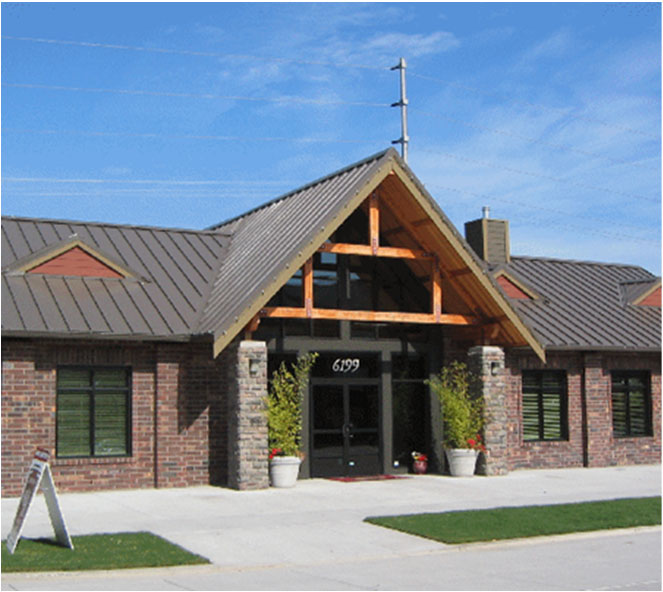
Figure 7-1. Prominent building entrance example.
(b) Weather Protection. Weather protection at least five feet deep and proportional to the distance above ground level shall be provided over the primary entry of all businesses and nonresidential buildings. Weather protection for the primary entry of residential units shall be at least three feet deep.
(c) ADA Requirements. Pedestrian pathways from public sidewalks to primary entrances, or from parking lots to primary entrances, shall be accessible, conforming to federal and state Americans with Disabilities Act requirements, and shall be clearly delineated.
(d) Access to Residential Units. Ground floor residential units facing a street or common open space shall be directly accessible from the applicable street or open space.
(e) Townhouse Entrances. Townhomes and all other multifamily dwelling units with private exterior ground-floor entries shall provide at least 20 square feet of landscaping adjacent to the entry. This is particularly important for units where the primary entrance is next to private garages off an interior access road. Such landscaping areas soften the appearance of the building and highlight individual entries. See Figures 7-2 and 7-3 for good and bad examples.
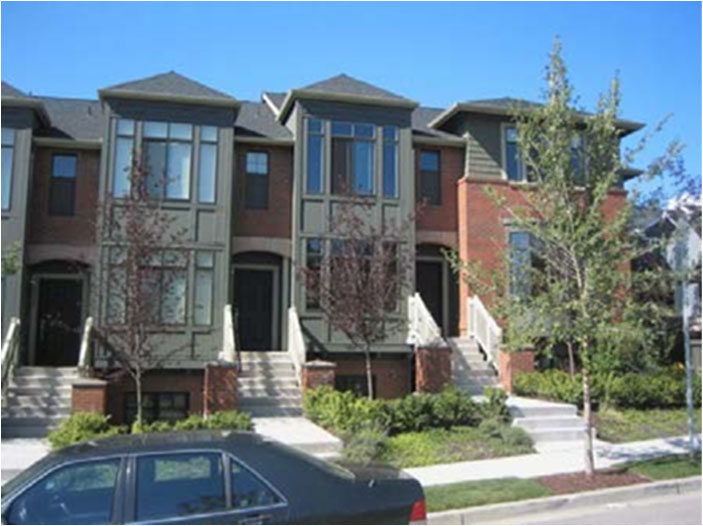
Figure 7-2. Ground floor residential units directly accessible to the street with landscaping at the entry.
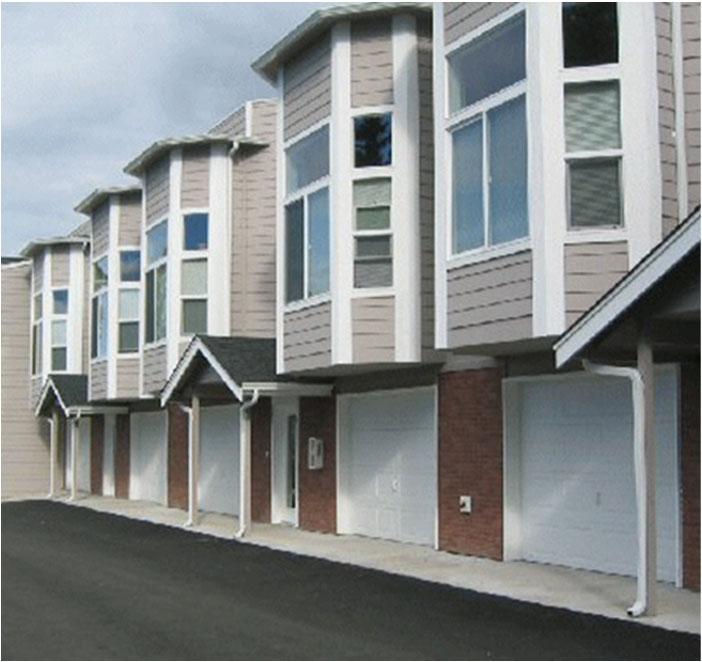
Figure 7-3. A bad townhouse example with no landscaping adjacent to the entry.
(f) Secondary Public Access. Whereas these design standards and guidelines encourage businesses to front on streets rather than parking lots, a large number of customers will likely use the secondary entry off of the parking lot. Such businesses that have secondary public access shall comply with the following measures to enhance secondary public access (applies only to entries used by the public):
(i) Weather protection at least three feet deep is required over each secondary entry.
(ii) Two or more of the following design elements shall be incorporated within or adjacent to the secondary entry:
(A) A transparent window or door to allow visibility into the business;
(B) A landscaping bed, trellis, or other permanent landscaping element adjacent to the entry;
(C) Decorative architectural treatments that add visual interest to the entry;
(D) Outdoor dining area or pedestrian-oriented space;
(E) Decorative lighting; or
(F) Other design elements that meet the intent of the standards and guidelines per the director.
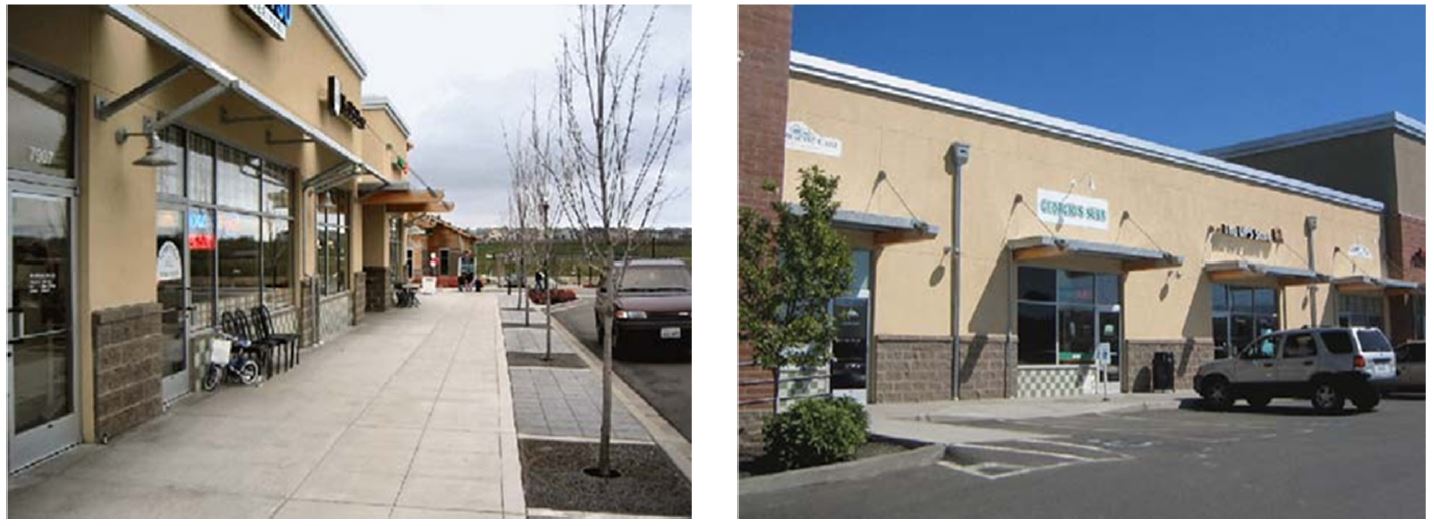
Figure 7-4. Front (left) and back (right) entrances of a retail building sited adjacent to a public street. While the sidewalk entrance is designed as the primary entrance, the back entry includes weather protection and use of decorative building materials to enhance this secondary entry.
(Ord. 3230 § 2 (Exh. A), 2022).
22C.070.180 Architectural character and scale.
(1) Intent.
(a) To promote architecture that contributes to the character and identity of the neighborhood.
(b) To reduce the scale of large buildings and add visual interest.
(c) To provide minimum floor-to-ceiling heights for ground floor commercial spaces appropriate to accommodate a full range of retail uses.
(2) Standards and Guidelines.
(a) No Franchise or Corporate Architecture. Architecture that is defined predominately by corporate identity features (and difficult to adapt to other uses) is prohibited. For example, some fast food franchises have very specific architectural features that reinforce their identity. Besides diluting the neighborhood’s identity with corporate (and, therefore, generic) identities, these buildings are undesirable because they are not adaptable to other uses when the corporate franchises leave.
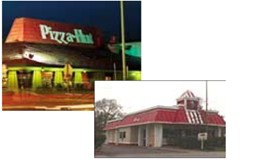
Figure 7-5. Generic franchise and corporate architecture is not allowed.
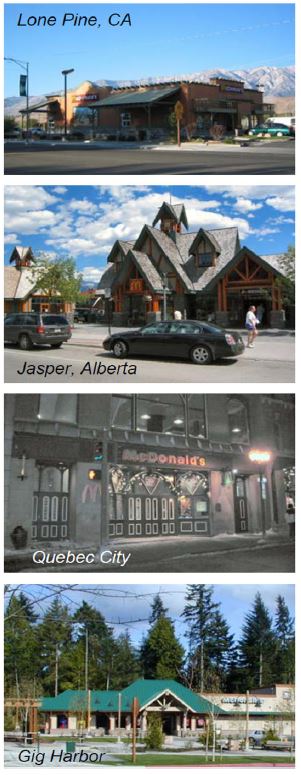
Figure 7-6. Examples from other communities where a fast food franchise’s architecture was modified to fit into the context of the community.
(b) Building Facades. All facades of a building shall be given equal design consideration. Some flexibility may be given by the director for alley or other facades that are not visible from streets, parks, parking lots, or other uses.
(c) Streetfront Articulation. All nonresidential building facades fronting directly on a street must include at least two of the following articulation features at intervals no greater than 30 feet.
(i) Use of window and/or entries that reinforce the pattern of small storefront spaces.
(ii) Use of weather protection features that reinforce the pattern of small storefronts. For example, for a business that occupies three lots, use three separate awnings to break down the scale of the storefronts. Alternating colors of the awnings may be useful as well.
(iii) Change of roofline.
(iv) Change in building material or siding style.
(v) Other methods that meet the intent of the standards and guidelines.
Figure 7-7. For commercial buildings built up to the sidewalk, provide facade articulation features at no more than 30-foot intervals.
(d) Facade Articulation for All Other Nonresidential Buildings Not Covered in Subsection (2)(c) of This Section. All nonresidential building facades fronting on a street or containing a pedestrian entrance must include at least three of the following articulation features at intervals no greater than 70 feet.
(i) Use of window and/or entries that reinforce the pattern of small storefront spaces.
(ii) Vertical building modulation. The minimum depth and width of modulation shall be two and four feet, respectively (preferably tied to a change in roofline, building material or siding style).
(iii) Use of weather protection features that reinforce the pattern of small storefronts.
(iv) Change of roofline.
(v) Change in building material or siding style.
(vi) Providing lighting fixtures, trellis, tree, or other landscape feature within each interval.
(vii) Articulation of the building’s top, middle, and bottom for multistory commercial buildings. This typically includes a distinctive ground floor or lower floor design, consistent articulation of middle floors, and a distinctive roofline.
(viii) Other methods that meet the intent of the standards and guidelines.
(ix) Exception: Alternative articulation methods will be considered by the director provided such treatment meets the intent of the standards and guidelines. For example, use of high quality building materials (such as brick or stone) with attractive detailing may allow a building to meet the intent of the standards using greater articulation intervals. Also, where the articulated features are more substantial in terms of effectively breaking up the facade into smaller components, then a greater distance between architectural intervals may be acceptable.
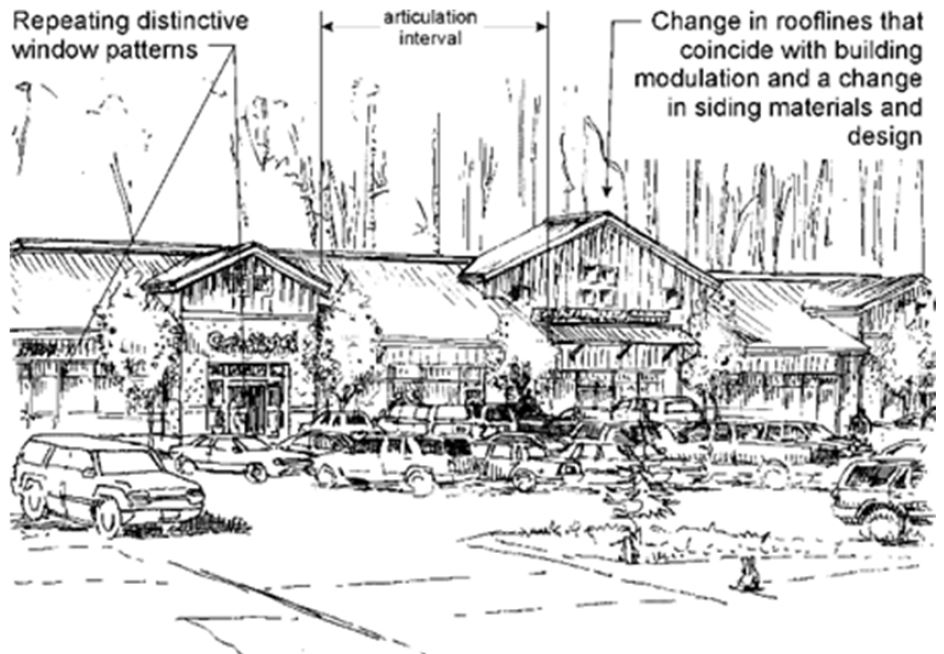
Figure 7-8. Example of building articulation.
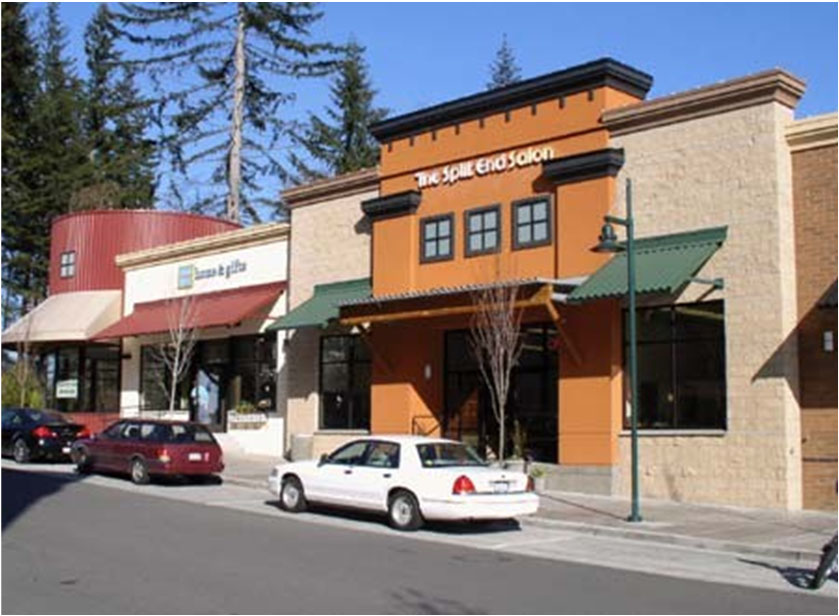
Figure 7-9. This building utilizes a number of methods to reduce its perceived bulk.
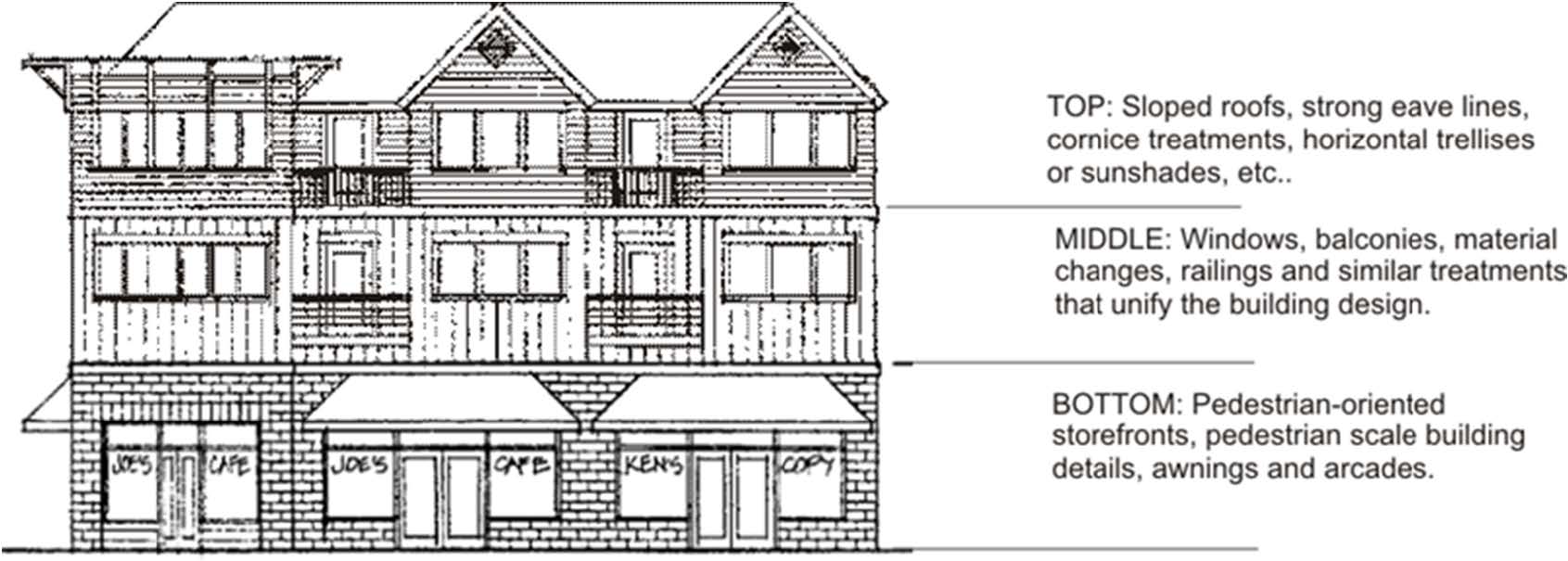
Figure 7-10. An example of clearly articulating a building’s top, middle, and bottom by utilizing a combination of storefront elements on the ground floor, defined window patterns and articulation treatments on upper floors, and a distinctive roofline and/or top floor.
(e) Roofline Modulation.
(i) In order to qualify as an articulation element in subsection (2)(c), (d), or (e) of this section, the roofline shall meet the following modulation requirements:
(A) For flat roofs or facades with horizontal eave, fascia, or parapet, the minimum vertical dimension of roofline modulation is the greater of two feet or 0.1 multiplied by the wall height (finish grade to top of the wall) when combined with vertical building modulation techniques described in this subsection (2)(e). Otherwise, the minimum vertical dimension of roofline modulation is the greater of four feet or 0.2 multiplied by the wall height.
(B) Buildings with pitched roofs must include a minimum slope of 5:12 and feature modulated roofline components at the interval required per the applicable standard above.
(ii) For large-scale retail uses (with at least 50,000 square feet of floor area and facades greater than 150 feet in width), the storefront shall integrate a prominent entry feature combining substantial roofline modulation with vertical building modulation and a distinctive change in materials and/or colors. The minimum vertical dimension of roofline modulation is the greater of six feet or 0.3 multiplied by the wall height (finish grade to top of the wall). The director will consider alternative treatments provided they meet the intent of the standards and guidelines.
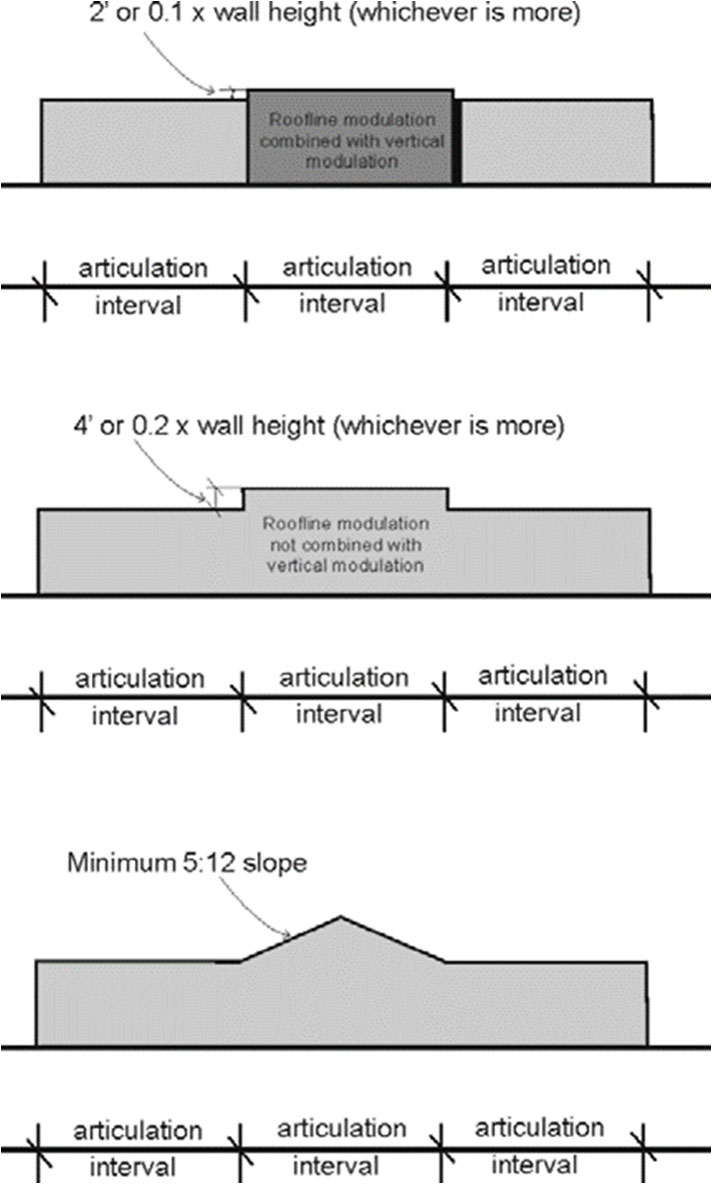
Figure 7-11. Roofline modulation standards.
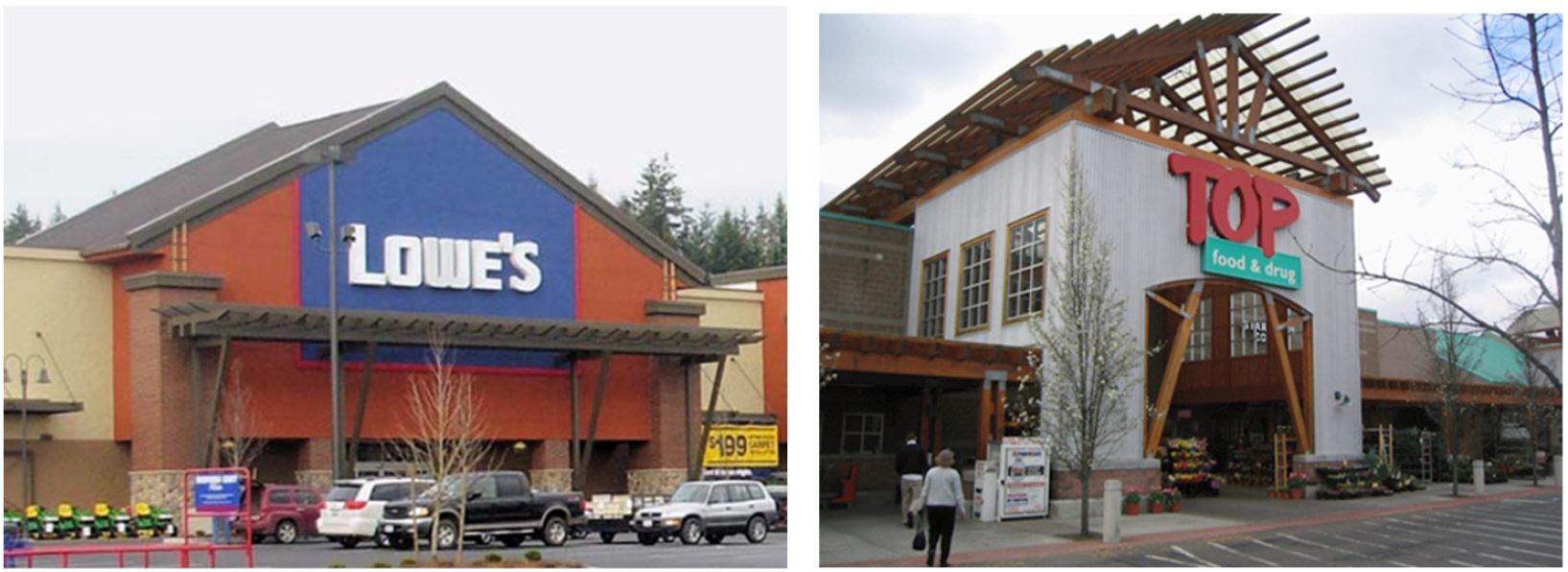
Figure 7-12. Good examples of prominent pedestrian entries for large-scale retail uses. Note height change, vertical modulation, use of building materials, colors, and detailing to add interest and emphasis.
(f) Facade Articulation – Multifamily Residential Buildings and Residential Portions of Mixed Use Buildings. All residential buildings and residential portions of mixed use buildings shall include at least three of the following articulation features at intervals of no more than 30 feet along all facades facing a street, common open space, and common parking areas:
(i) Repeating distinctive window patterns at intervals of no more than 30 feet. See Figure 7-14 for an example.
(ii) Vertical building modulation. Minimum depth and width of modulation is two feet and four feet, respectively, if tied to a change in color or building material and/or roofline modulation as defined in subsection (2)(e) of this section. Otherwise, minimum depth of modulation is 10 feet and minimum width for each modulation is 15 feet. Balconies may not be used to meet modulation option unless they are recessed or projected from the facade at least 18 inches and integrated with the building’s architecture as determined by the director.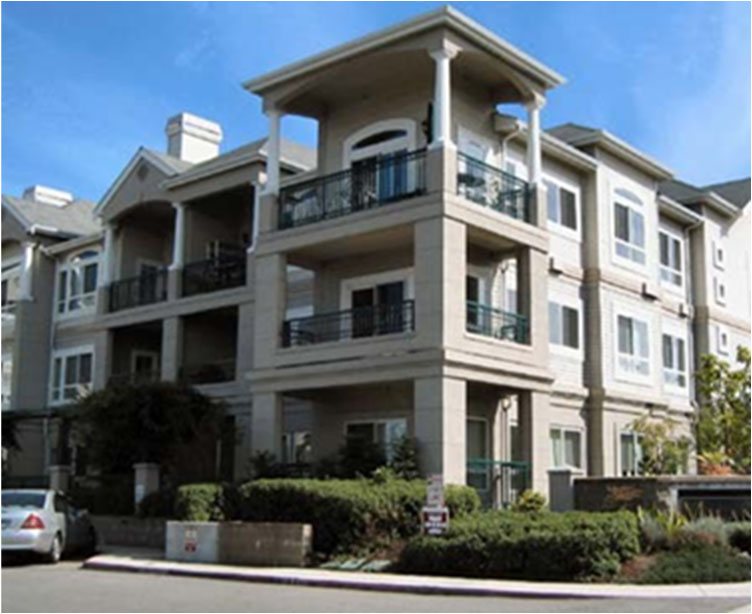
Figure 7-13. An example of balconies integrated with the architecture of the building.
(iii) Horizontal modulation (upper level step-backs). To qualify for this measure, the minimum horizontal modulation shall be five feet.
(iv) Articulation of the building’s top, middle, and bottom. This typically includes a distinctive ground floor or lower floor design, consistent articulation of middle floors, and a distinctive roofline. (See Figures 7-10 and 7-14.)
Figure 7-14. Note the repeating distinctive window patterns and the articulation of the buildings top, middle, and bottom.
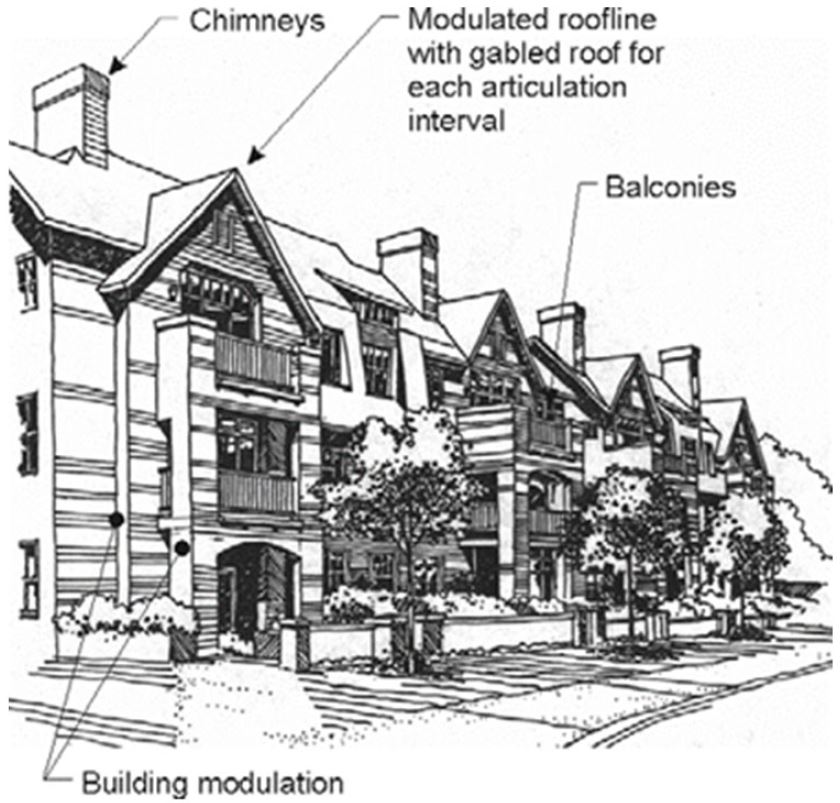
Figure 7-15. Example of good articulation for a multifamily building.
(g) Maximum Facade Width. The maximum facade width (the facade includes the apparent width of the structure facing the street and includes required modulation) of multifamily residential buildings and residential floors of mixed use buildings is 120 feet. Buildings exceeding 120 feet in width along the street front shall be divided by a modulation of the exterior wall, so that the maximum length of a particular facade is 120 feet. Such modulation shall be at least 20 feet or deeper and extend through all residential floors.
For large-scale retail uses, prominent entry features required in subsection (2)(e)(ii) of this section may also be used to meet this requirement.
The director may consider departures from this guideline, provided the proposed treatment meets the intent of the standards and guidelines. See Figure 7-16 for a good example of an attractive treatment that meets the intent.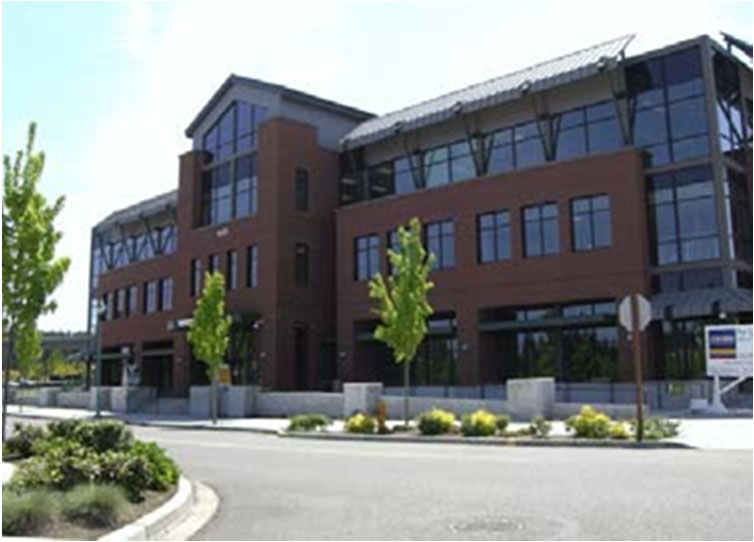
Figure 7-16. The prominent vertical element of this building effectively breaks up the perceived scale of the building and adds visual interest.
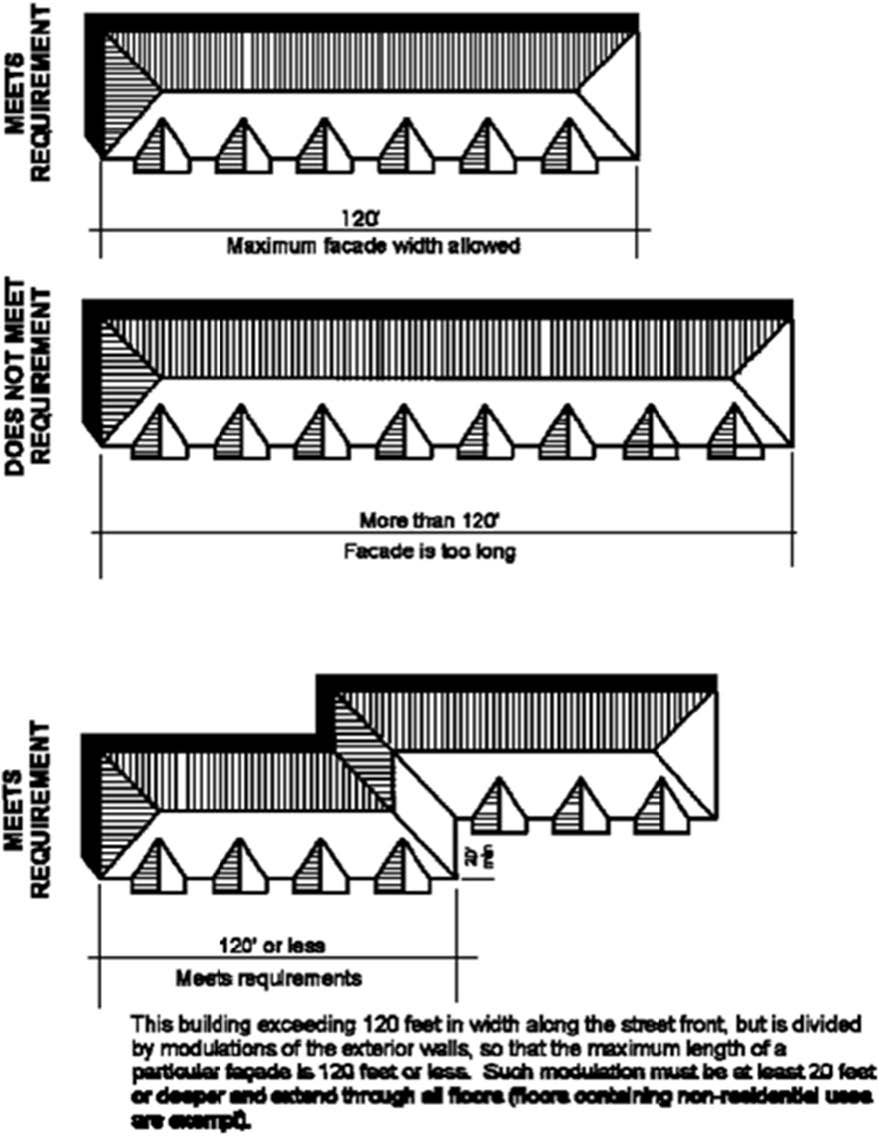
Figure 7-17. Requirements for facade length.
(h) Minimum Floor-to-Ceiling Height for Commercial Uses. In order to ensure the ground floor of structures has adequate height to function efficiently for retail uses, spaces intended for commercial uses shall provide a minimum 13-foot floor-to-finished-ceiling height. (Ord. 3230 § 2 (Exh. A), 2022).
22C.070.190 Building details.
(1) Intent.
(a) To encourage the incorporation of design details and small-scale elements into building facades that are attractive at a pedestrian scale.
(b) To create visual interest and increased activity at public street corners.
(2) Standards and Guidelines.
(a) Details Toolbox for Commercial Buildings. All commercial buildings shall be enhanced with appropriate details. All new buildings shall employ at least one detail element from each of the three categories below. Other mixtures of detail elements will be considered provided they meet the intent. The applicant must demonstrate how the amount, type, and mix of details meet the intent of the standards and guidelines. For example, a large building with multiple storefronts will likely need more than one decorative sign, one transom window, and one decorative kick-plate to meet the intent of the standards and guidelines.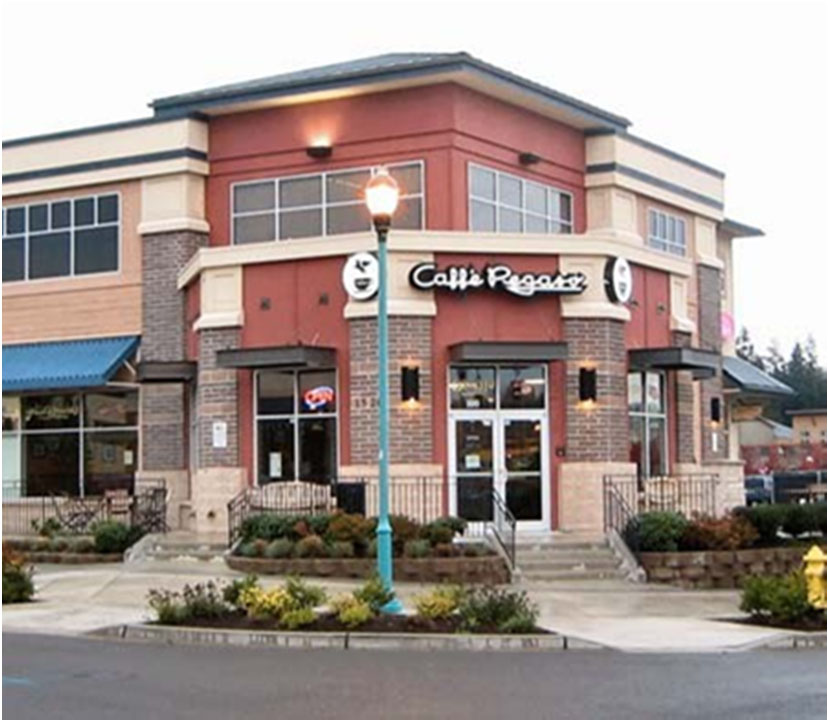
Figure 7-18. Decorative use of building materials, lighting, signage, and landscaping creates a statement at this corner location.
(i) Window and/or entry treatment:
(A) Display windows divided into a grid of multiple panes.
(B) Transom windows.
(C) Roll-up windows/doors.
(D) Other distinctive window treatment that meets the intent of the standards and guidelines.
(E) Recessed entry.
(F) Decorative door.
(G) Arcade.
(H) Landscaped trellises or other decorative element that incorporates landscaping near the building entry.
(I) Other decorative entry treatment that meets the intent of the standards and guidelines.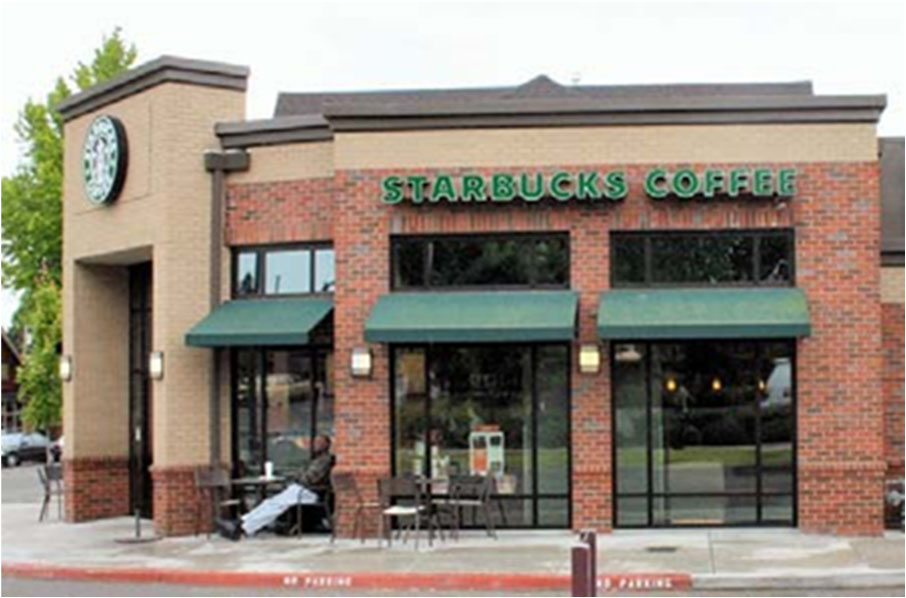
Figure 7-19. This building would meet the details guideline by using a decorative entry element, building materials, and lighting.
(ii) Decorative facade attachments:
(A) Decorative weather protections element such as a steel canopy, decorative cloth awning, or retractable awning.
(B) Decorative, custom hanging sign(s).
(C) Decorative building-mounted light fixtures.
(iii) Decorative facade attachments:
(A) Decorative weather protections element such as a steel canopy, decorative cloth awning, or retractable awning.
(B) Decorative, custom hanging sign(s).
(C) Decorative building-mounted light fixtures.
(iv) Decorative elements referenced above must be distinct “one-of-a-kind” elements or unusual designs that require a high level of craftsmanship as determined by the director.
(b) Details Toolbox for Multifamily Buildings. All multifamily buildings shall be enhanced with appropriate details. Each of the types of details listed below are worth one point unless otherwise noted. Multifamily building facades must achieve the equivalent of four points worth of architectural details. Chosen details must be compatible with the chosen architectural style. Detail options:
(i) Decorative porch design with distinct design and use of materials.
(ii) Decorative treatment of windows and doors, such as decorative molding/framing details around all ground floor windows and doors, bay windows, decorative glazing, or door designs, and/or unique window designs.
(iii) Landscaped trellises or other decorative element that incorporates landscaping near the building entry or entries.
(iv) Decorative light fixtures with a diffuse visible light source, such as a globe or “acorn” that is nonglaring or a decorative shade or mounting for each building entry on the facade.
(v) Brick or stonework covering more than 10 percent of the facade (two points).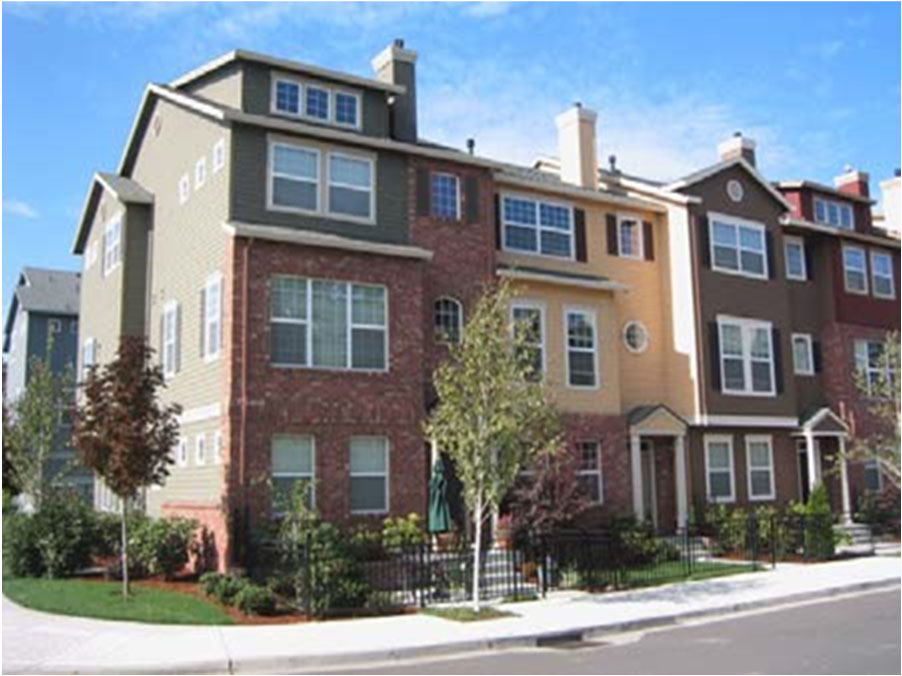
Figure 7-20. This building uses brick for more than 10 percent of the facade, a decorative mix of materials and colors, decorative entries, and decorative windows to add visual interest.
(vi) Decorative building materials that add visual interest, including:
(A) Individualized patterns or continuous wood details.
(B) Decorative moldings, brackets, wave trim or lattice work.
(C) Decorative brick or stonework (may be in addition to the brick or stonework credits noted above if they are arranged in a decorative manner that add visual interest to the facade).
(D) Other materials with decorative or textural qualities as approved by the director. The applicant must submit architectural drawings and material samples for approval.
(vii) Decorative roofline design, including multiple gables and/or dormers or other design that adds distinct visual interest.
(viii) Decorative railings, grill work, or terraced landscape beds integrated along the facade of the building.
(ix) Decorative balcony design, such as distinctive railings.
(x) Other details that meet the intent of the standards and guidelines as approved by the director.

Figure 7-21. Acceptable and unacceptable window treatments.
(c) Window Design for Residential Uses. Building facades shall employ techniques to recess or project individual windows above the ground floor at least two inches from the facade or incorporate window trim at least four inches in width that features color that contrasts with the base building color. Exceptions will be considered by the director where buildings employ other distinctive window or facade treatment that adds visual interest to the building.
(d) Blank Wall Standards/Treatments. Blank walls visible from a public street, sidewalks, trails, interior pathways, or customer parking lots are prohibited. A wall (including building facades and other exterior building walls, retaining walls, and fences) is defined as a blank wall if:
(i) A ground floor wall or portion of a ground floor wall over four feet in height has a horizontal length greater than 15 feet and does not include a transparent window or door; or
(ii) Any portion of a ground floor wall having a surface area of 400 square feet or greater does not include a transparent window or door.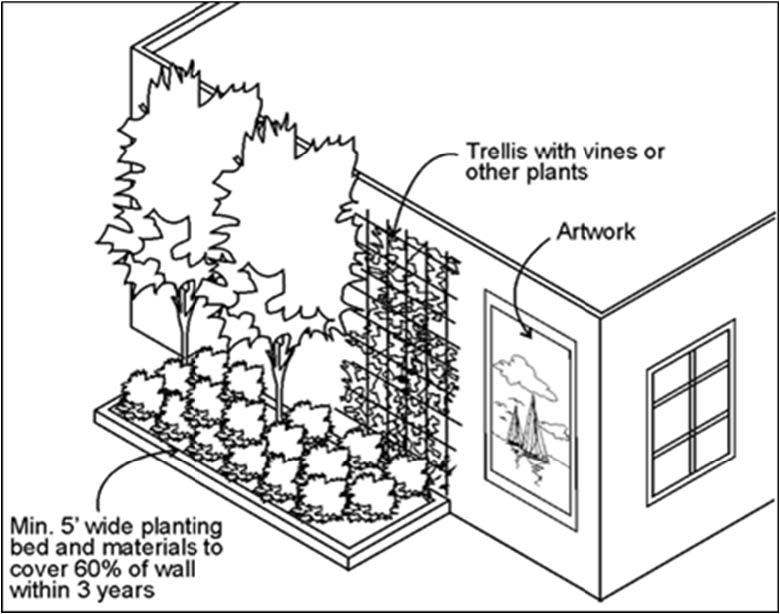
Figure 7-22. Blank wall treatments.
(iii) Design treatments to eliminate blank walls can include:
(A) Transparent windows or doors.
(B) Display windows.
(C) Landscape planting bed at least five feet wide or a raised planter bed at least two feet high and three feet wide in front of the wall. Such planting areas shall include planting materials that are sufficient to obscure or screen at least 60 percent of the wall’s surface within three years.
(D) Installing a vertical trellis in front of the wall with climbing vines or plant materials sufficient to obscure or screen at least 60 percent of the wall’s surface within three years. For large areas, trellises should be used in conjunction with other blank wall treatments.
(E) Other methods such as murals or special building material treatments that meet the intent of the standards and guidelines as approved by the director.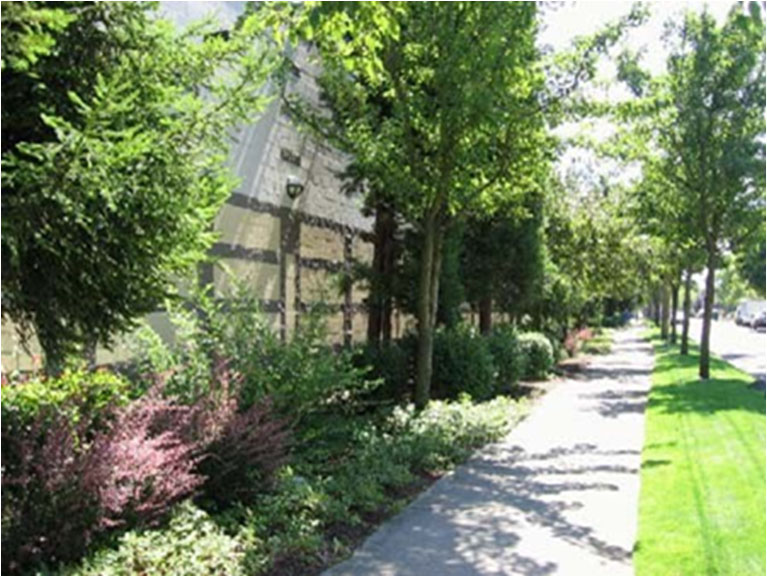
Figure 7-23. Blank wall treatment example.
(Ord. 3230 § 2 (Exh. A), 2022).
22C.070.200 Building materials and color.
(1) Intent.
(a) To encourage high-quality building materials that enhance the character of the area.
(b) To discourage poor materials with high lifecycle costs.
(c) To encourage the use of materials that reduce the visual bulk of large buildings.
(d) To encourage the use of materials that add visual interest to the neighborhood.
(2) Standards and Guidelines.
(a) Quality Building Materials. Building exteriors should be constructed from high quality, durable materials. Building materials such as concrete, masonry, tile, stone, and wood are encouraged.

Figure 7-24. An example of concrete block effectively used with EIFS and metal awnings.
(b) Prohibited Materials. The following materials are prohibited in visible locations unless an exception is granted by the director based on the integration of the material into the overall design of the structure:
(i) Plywood siding (including T-111 or similar plywood). Board and batten is an exception.
(ii) Highly tinted or mirrored glass (except stained glass) as more than 10 percent of the building facade.
(iii) Corrugated fiberglass.
(iv) Chain link fencing (except for temporary purposes such as a construction site or as a gate for a refuse enclosure).
(v) Crushed colored rock/crushed tumbled glass.
(vi) Noncorrugated and highly reflective sheet metal.
(c) Special Standards and Guidelines for Concrete Blocks. Concrete masonry units (CMU) or cinder blocks, when used for walls that are visible from a street, public park or open space, or pedestrian route, shall be architecturally treated in one or more of the following ways:
(i) Use in conjunction with other permitted exterior materials.
(ii) Use a combination of textured surfaces such as split face or grooved to create distinct banding or other design.
(iii) Use of other masonry types such as brick, glass block, or tile in conjunction with the concrete or concrete blocks.
(iv) Use of decorative coursing to break up blank wall areas.
(v) Use matching colored mortar where color is an element of architectural treatment for any of the options above.
(d) Special Standards and Guidelines for Metal Siding. When used for walls that are visible from a street, public park or open space, or pedestrian route, buildings shall have visible corner moldings and trim and incorporate masonry, stone, or other durable permanent material within two feet of the ground level. Facades wider than 40 feet that employ metal siding shall incorporate multiple colors and/or be incorporated with other siding materials.
Figure 7-25. This building features metal siding with visible corner trim and concrete block closer to the ground level.
(e) Special Standards for Exterior Insulation and Finish System (EIFS) and Other, Similar Troweled Finishes. Such finishes must be trimmed in wood or masonry and should be sheltered from extreme weather by roof overhangs or other methods and are limited to no more than 30 percent of the facade area. Weather-exposed horizontal surfaces must be avoided. Masonry, stone, or other durable permanent material is required for the first two feet above ground level.
(f) Storefront Color Palette. A storefront’s palette should be no more than three colors; one base color, one trim color, and one accent color. Encourage trim and accent colors that contrast with the base color. Specifically, darker base colors with white trim work particularly well. However, lighter base colors can effectively be combined with dark trim colors. (Ord. 3230 § 2 (Exh. A), 2022).
Article VIII. Landscaping and Screening
22C.070.210 Landscaping.
(1) Intent.
(a) To enhance the character of the neighborhood.
(b) To screen visual impacts of parking lots from streets.
(c) To encourage the use of attractive and drought-tolerant plant materials native to the coastal regions of the Pacific Northwest.
(d) To encourage attractive landscaping that reinforces the architectural and site planning concepts in response to site conditions and contexts.
(e) To promote tree retention and the protection of existing native vegetation.
(2) Standards and Guidelines.
(a) Parking Lots Located Adjacent to Public Streets and Major Internal Roadways. These lots shall be partially screened with landscaping planting strips (per subsection (2)(d) of this section) at the following widths:
(i) Thirty feet for community business-zoned properties along arterials.
(ii) Twenty feet for all other parking lot associated with nonresidential uses.
(iii) Ten feet for residential properties.
(iv) The director may approve and condition reduced planter widths provided the design meets the intent of the standards and guidelines. For example, reduced widths may be allowed provided the landscaped area is supplemented with architectural features that help to define the street edge and maintain visual continuity along the street. Examples could include a decorative low wall made of stone or masonry that is used in conjunction with landscaping, and/or use of a landscaped trellis or architectural columns. For each method, it is important to maintain visibility at eye level (between three and eight feet above the ground) between the street into the parking lot for safety.
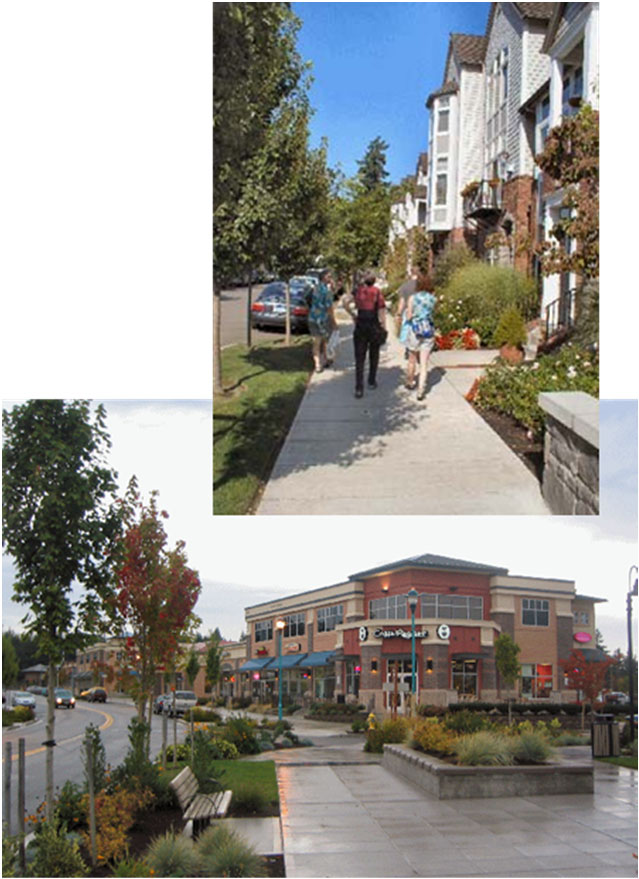
Figures 8-1 and 8-2. Landscape design and materials add color and identity to these developments.
(b) Internal Parking Lot Landscaping. Internal parking lot landscaping shall comply with MMC 22C.120.130.
(c) Foundation Planting. All street-facing elevations must have landscaping along any exposed foundation. The foundation landscaping must meet the following standards:
(i) The landscaped area must be at least three feet wide.
(ii) There must be at least one three-gallon shrub for every three lineal feet of foundation.
(iii) Ground cover plants must fully cover the remainder of the landscaped area.
(d) Arrangement of Plants. Projects are encouraged to use informal arrangement of plants installed in a variety of treatments that will enhance building designs, screen unwanted views, and enhance views and vistas. A formal arrangement may be acceptable if it has enough variety in layout and plants. Contiguous, long, unbroken, straight rows of a single plant should be avoided where possible.
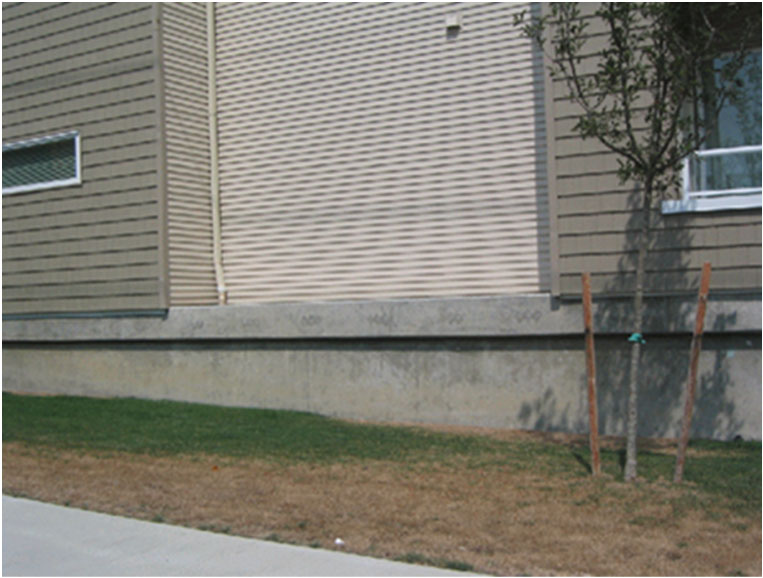
Figure 8-3. Exposed foundations like this should be landscaped with shrubs and other plantings for screening.
(Ord. 3230 § 2 (Exh. A), 2022).
22C.070.220 Fences and screening elements.
(1) Intent.
(a) To minimize the negative visual impacts of fences on the street and pedestrian environment.
(b) To screen the potential negative impacts of service and storage elements (e.g., waste receptacles, loading docks).
(c) To encourage thoughtful siting of service and storage elements that balance the functional needs with the desire to screen its negative impacts.
(2) Standard and Guidelines.
(a) Maximum Wall Height Along Public Streets or Sidewalks.
(i) The maximum height of solid (more than 50 percent opaque) freestanding walls, fences, or hedges in any front yard or other location between the street and the facade shall be three and one-half feet unless a taller wall is required, per the director, to mitigate significant noise and traffic impacts.
(ii) The maximum height of any decorative wall or fence which allows visibility (no more than 50 percent opaque), such as a wrought iron or split rail fences, shall be six feet. Such fences shall be set back from the sidewalk at least three feet to allow for landscaping elements to soften the view of the fence.
(iii) In development configurations where side yards abut a street, fences taller than three and one-half feet shall be set back at least five feet from the sidewalk to allow for landscaping to soften the view of the fence. Provisions for long term maintenance of this landscaping shall be addressed on the plat.
Figure 8-4. Trash receptacle screening example.
(b) Prohibited Fence Materials. Barbed wire, razor wire, electric and other dangerous fences are prohibited.
(c) Prohibited Development/Fence Configurations. Developments shall avoid configurations that have uses that back up against a street. Where unavoidable, fences between a street and any use shall be limited to three and one-half feet in height. Developments adjacent to SR 9 are exempt from this requirement.
(d) Service Element Location and Design. All developments shall provide a designated spot for service elements (refuse and disposal). Such elements shall meet the following requirements:
(i) Service elements shall be located to minimize the negative visual, noise, odor, and physical impacts to the street environment, adjacent (on and off-site) residents or other uses, and pedestrian areas.
(ii) The designated spot for service elements shall be paved with concrete.
(iii) Appropriate enclosure of the common trash and recycling elements shall be required, as determined by the director. Requirements and considerations:
(A) A six-foot fence constructed of concrete block or brick enclosing trash and recycling receptacles is required. Coordination with the current franchise hauler is required. The sides and rear of the enclosure must be screened with Type L1, L2, L3, or L4 landscaping (as defined in MMC 22C.120.110) at least five feet deep in visible locations as determined by the director to soften the views of the screening element and add visual interest.
(B) Proximity to adjacent residential units will be a key factor in determining appropriate service element treatment.
(C) Preferably, service enclosures are integrated into the building itself.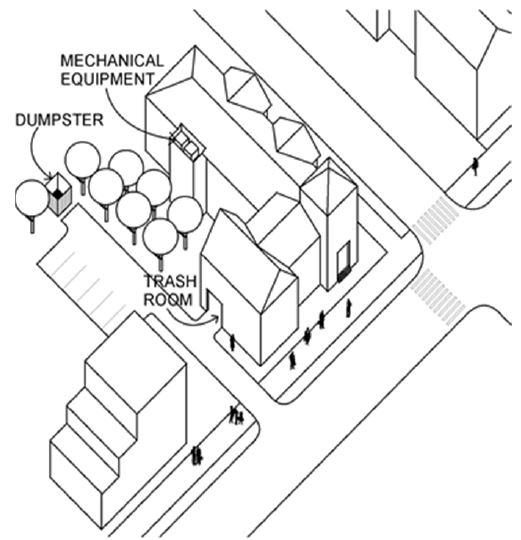
Figure 8-5. Locate service elements to minimize impacts on the pedestrian environment.
(e) Utility Meters, Electrical Conduit, and Other Service Utility Apparatus. These elements shall be located and/or designed to minimize their visibility to the public. If such elements are mounted in a location visible from the street, pedestrian pathway, common open space, or shared auto courtyards, they shall be screened with vegetation or by architectural features.
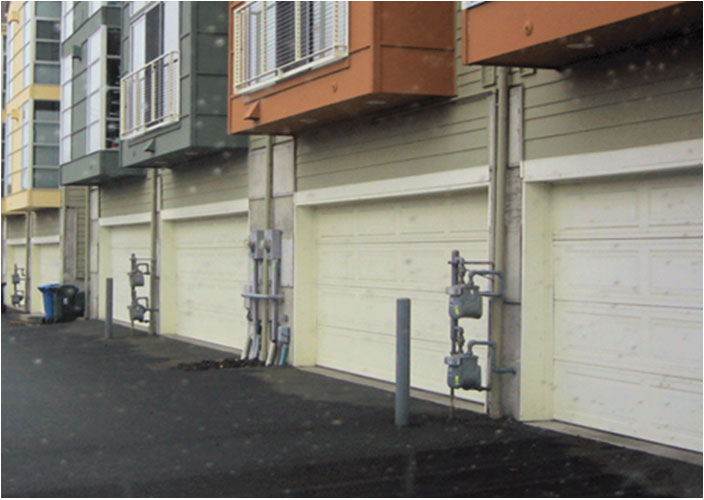
Figure 8-6. Exposed utility meters like this will not be allowed.
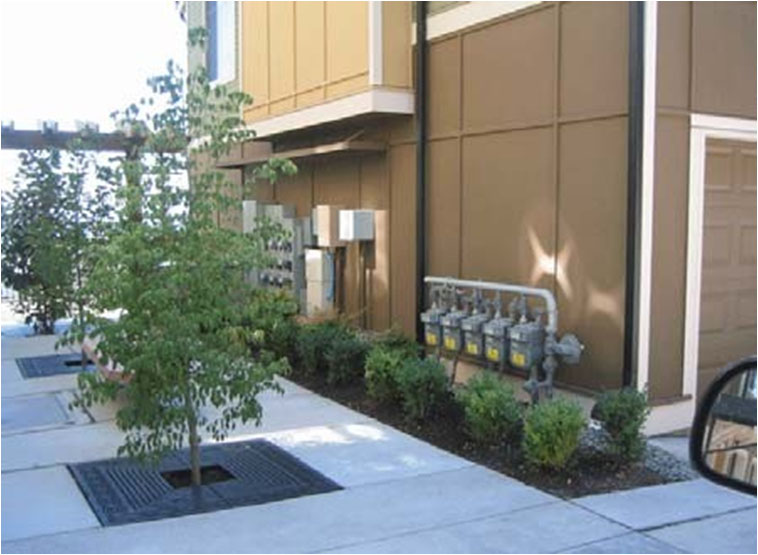
Figure 8-7. Landscaping helps to minimize the negative visual impacts of utility meters.
(f) Rooftop Mechanical Equipment. All rooftop mechanical equipment shall be organized, proportioned, detailed, screened, landscaped (with decks or terraces) and/or colored to be an integral element of the building and minimize visual impacts from the ground level of adjacent streets and properties. For example, screening features should utilize similar building materials and forms to blend with the architectural character of the building. (Ord. 3230 § 2 (Exh. A), 2022).



